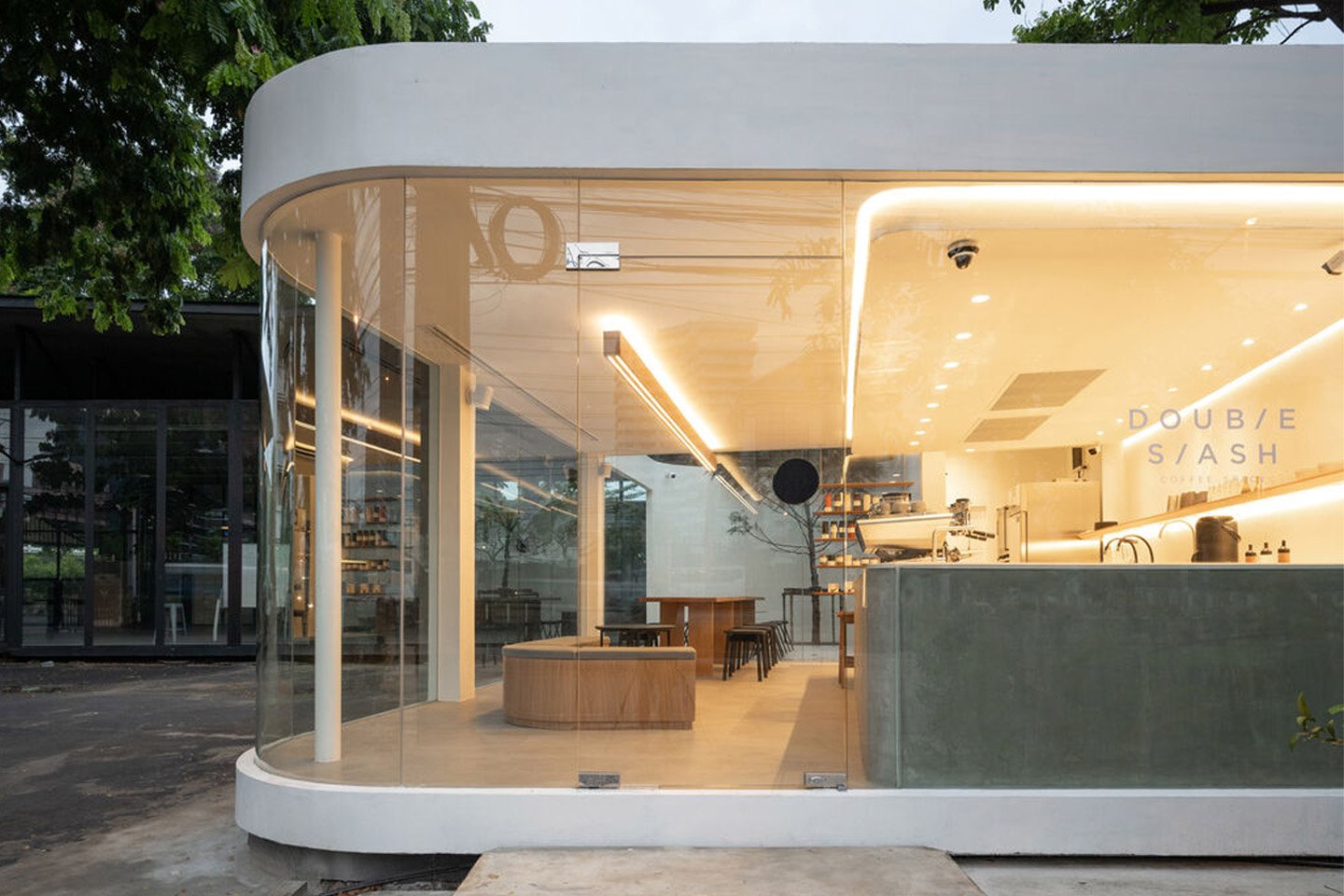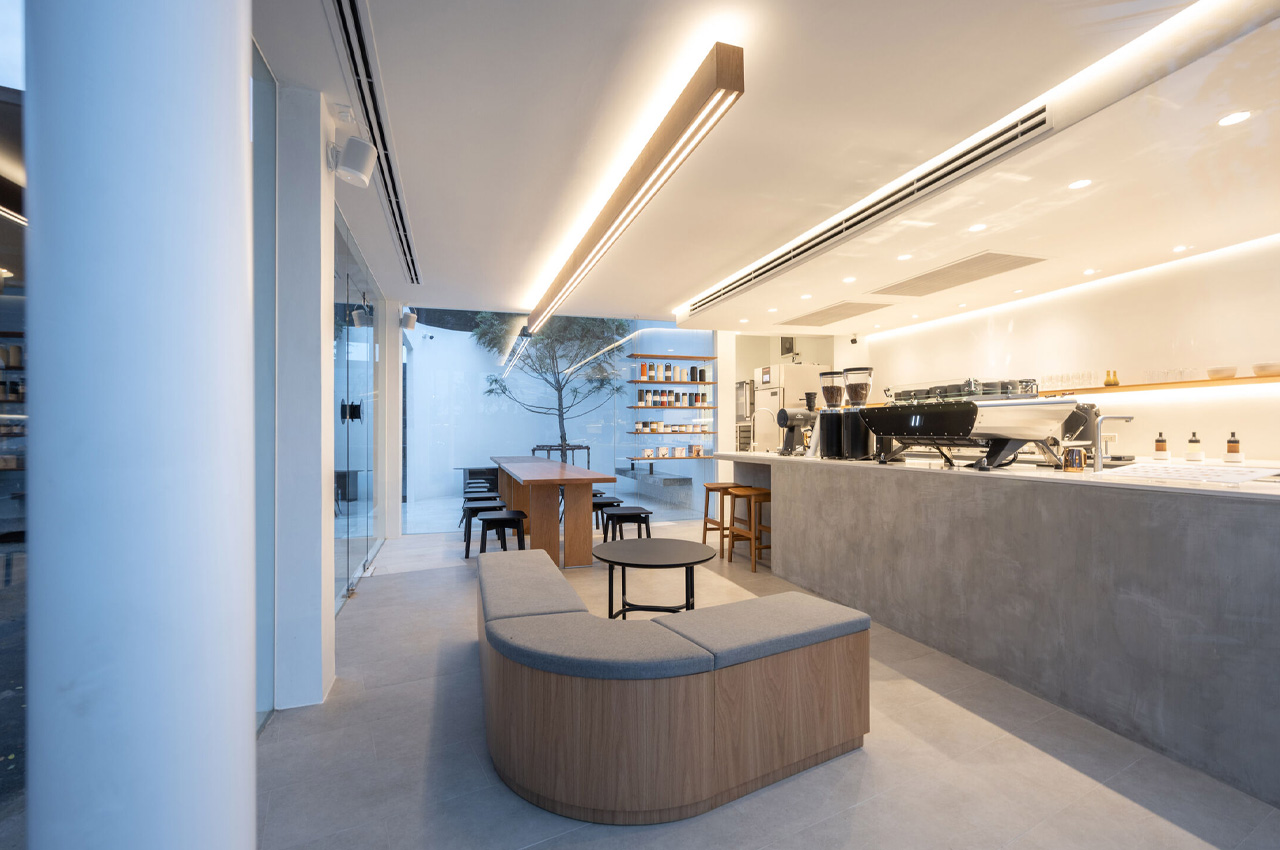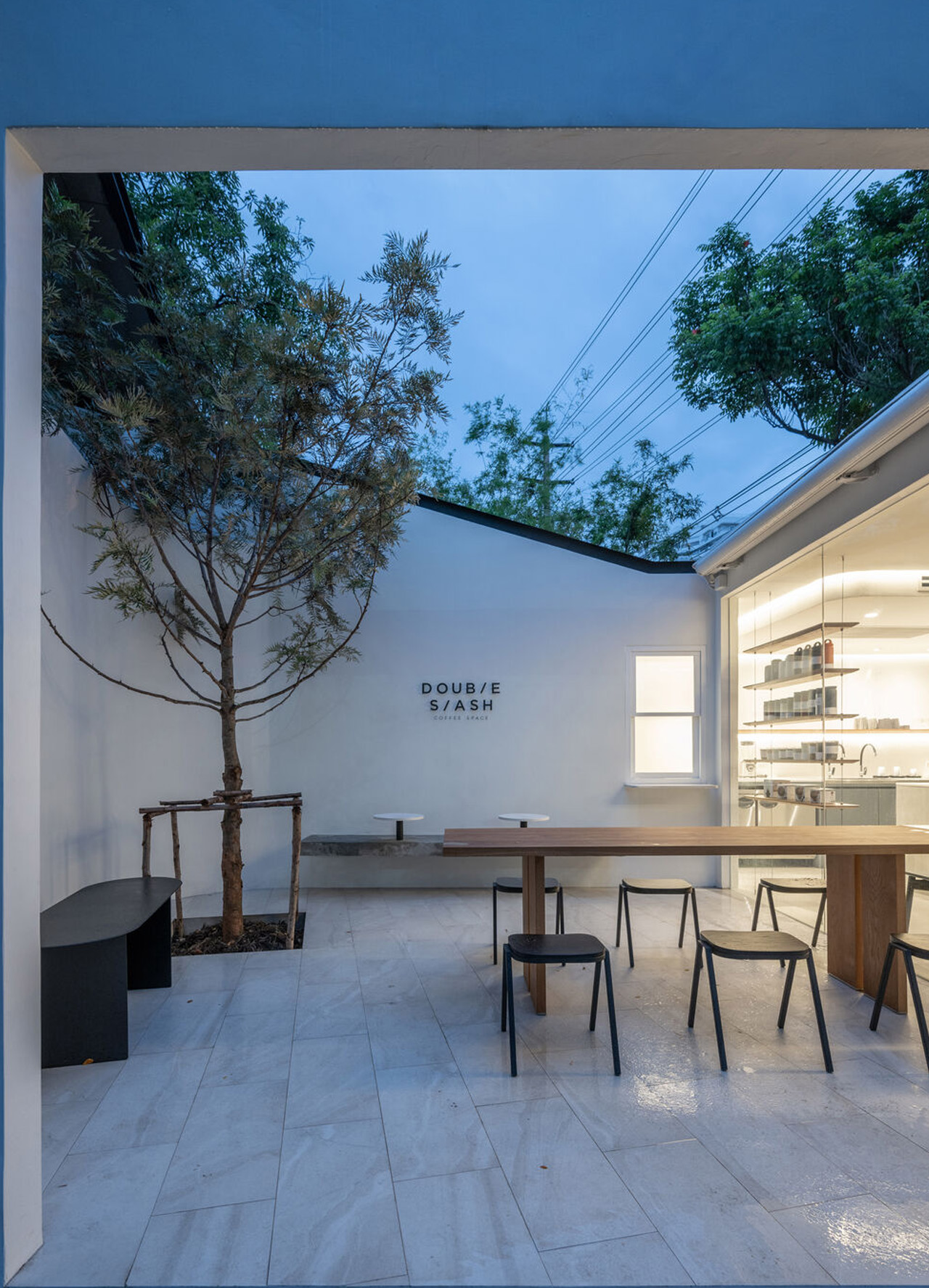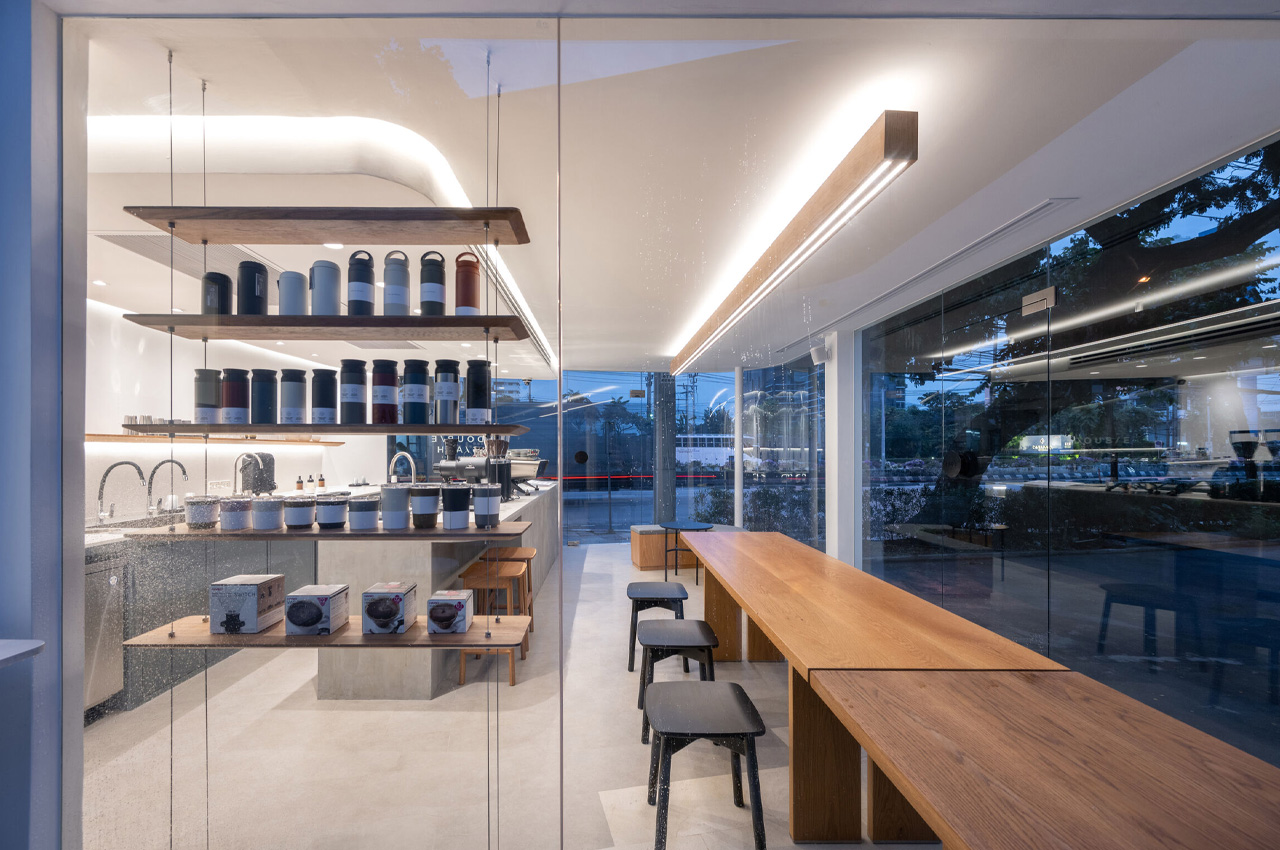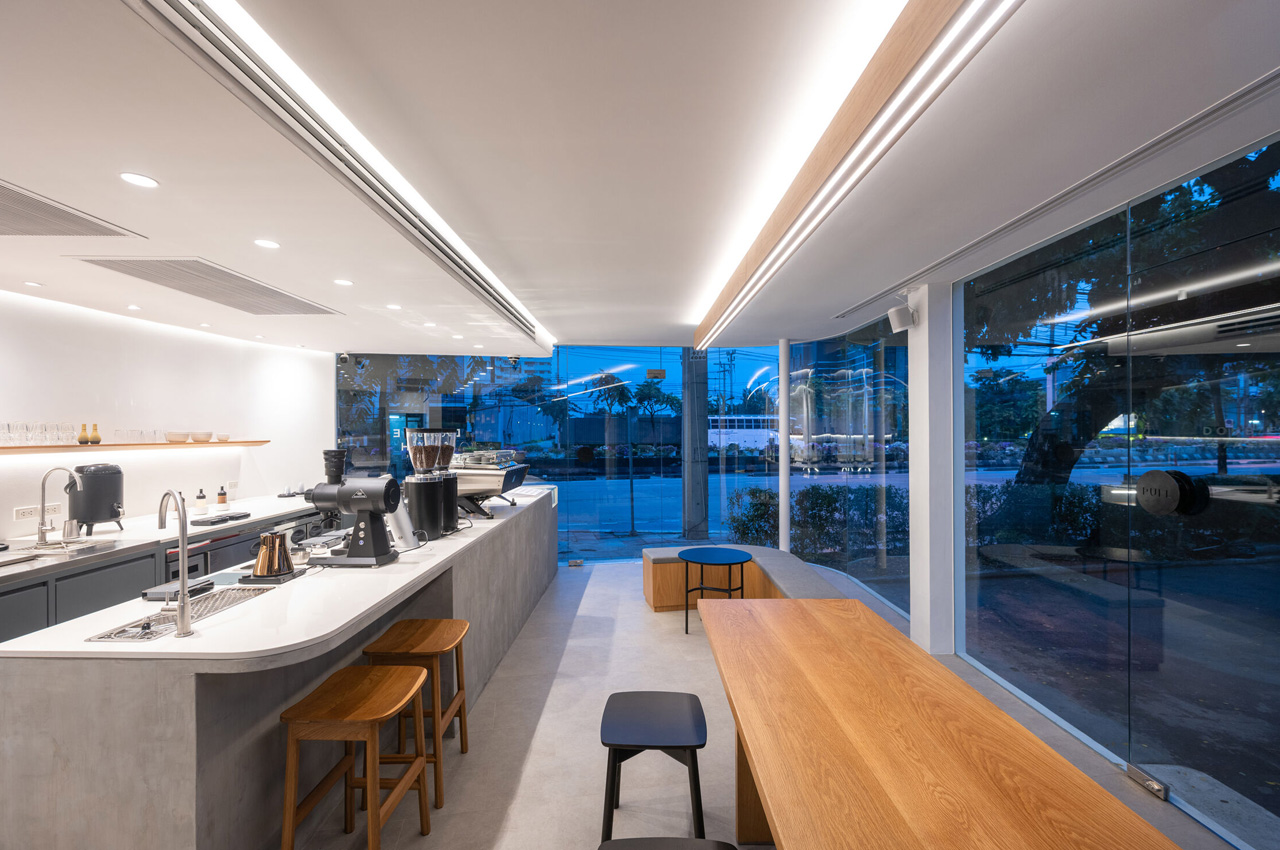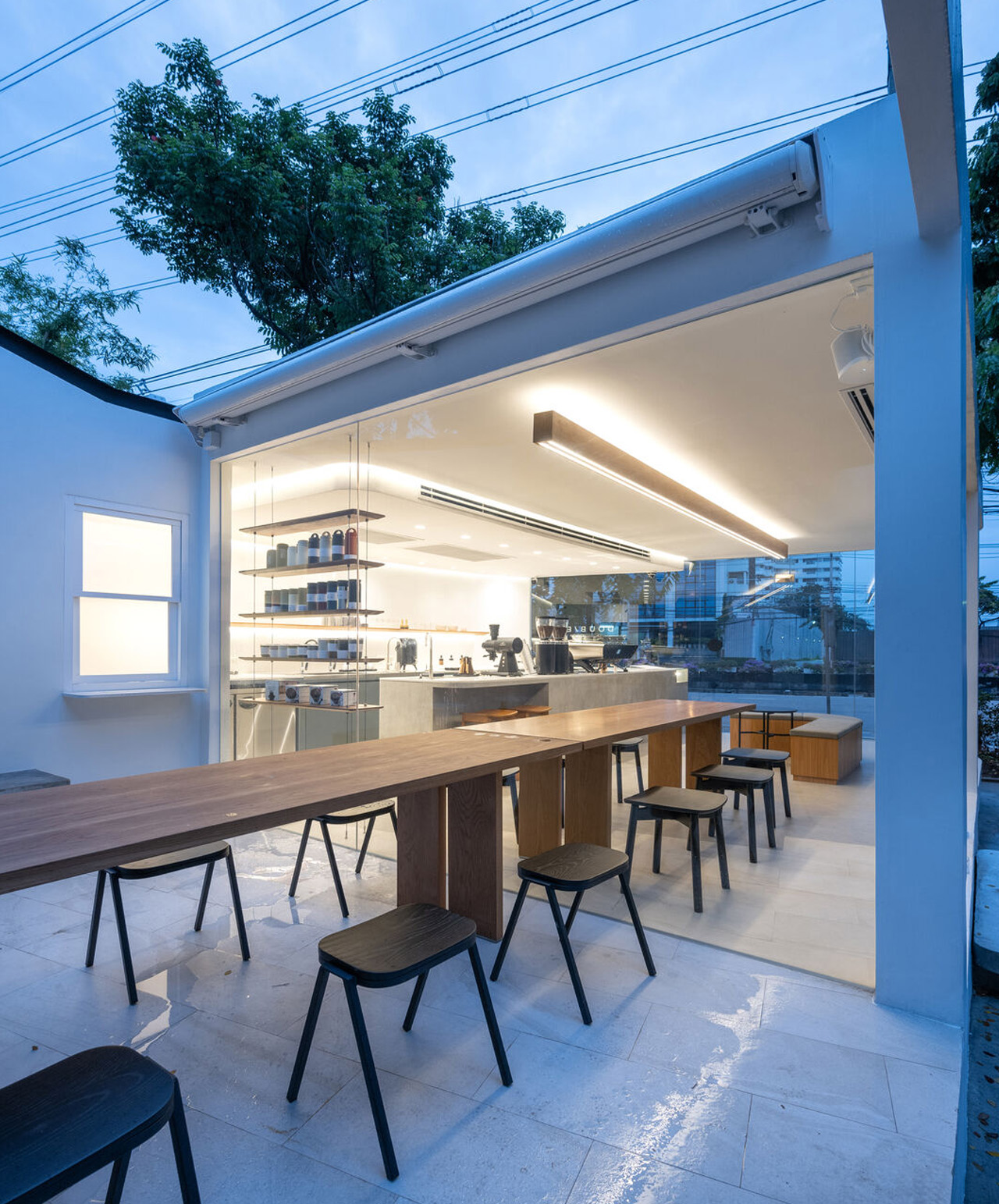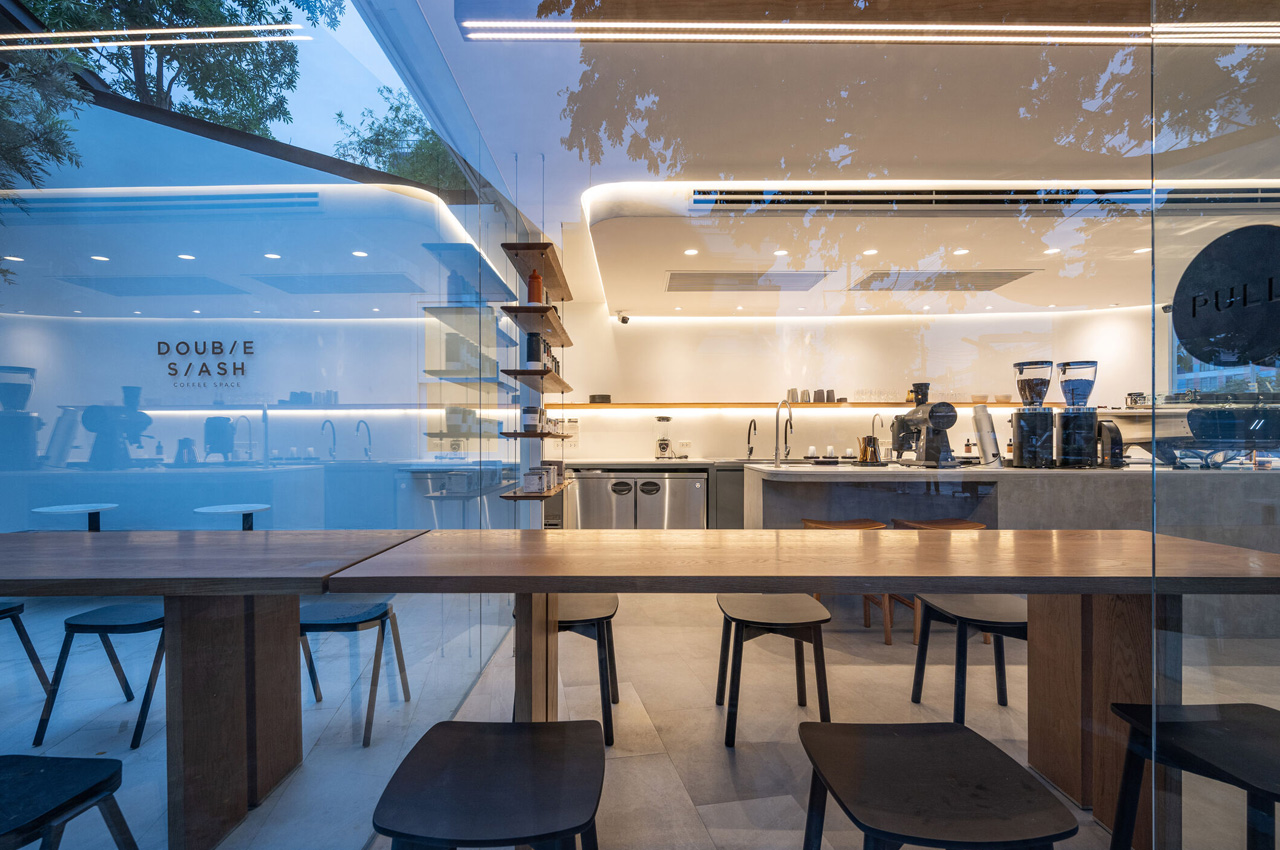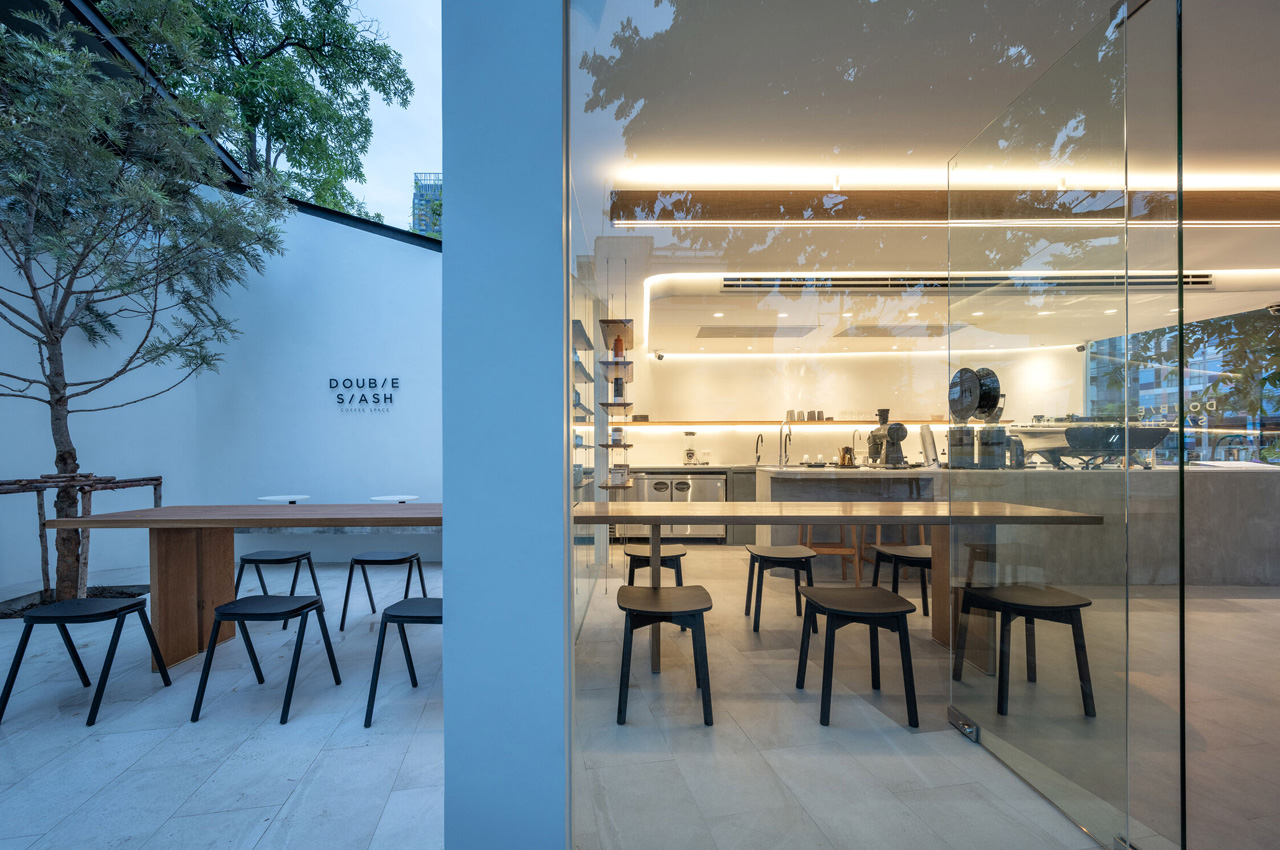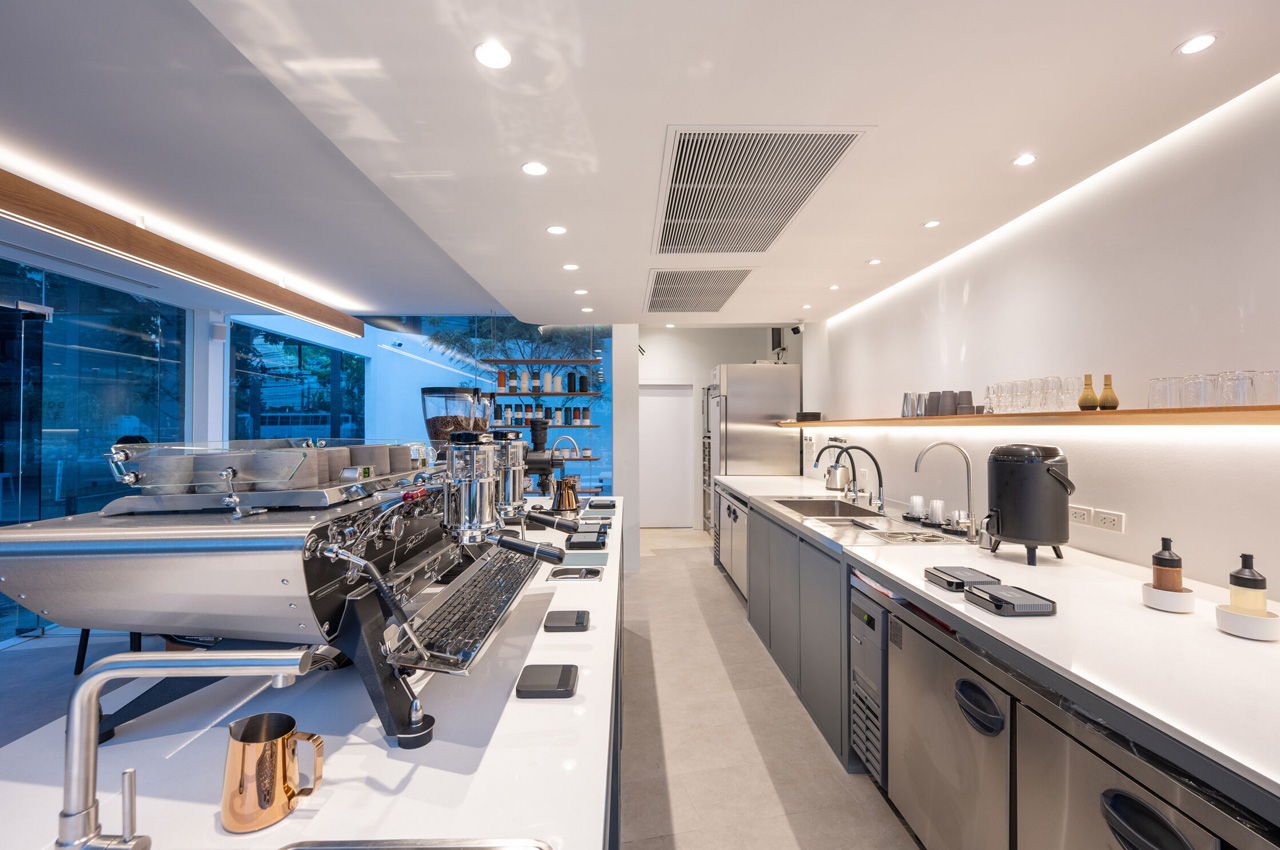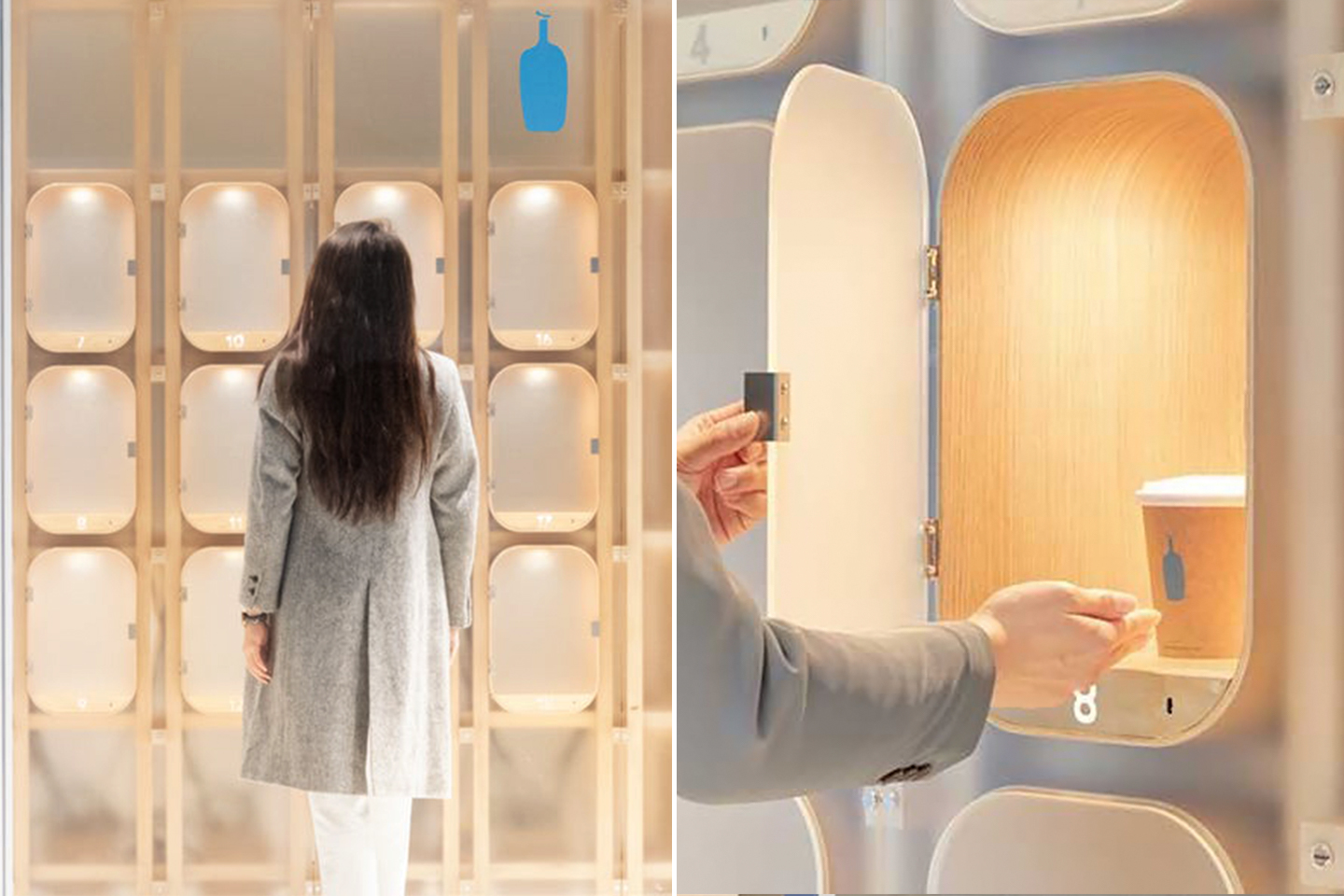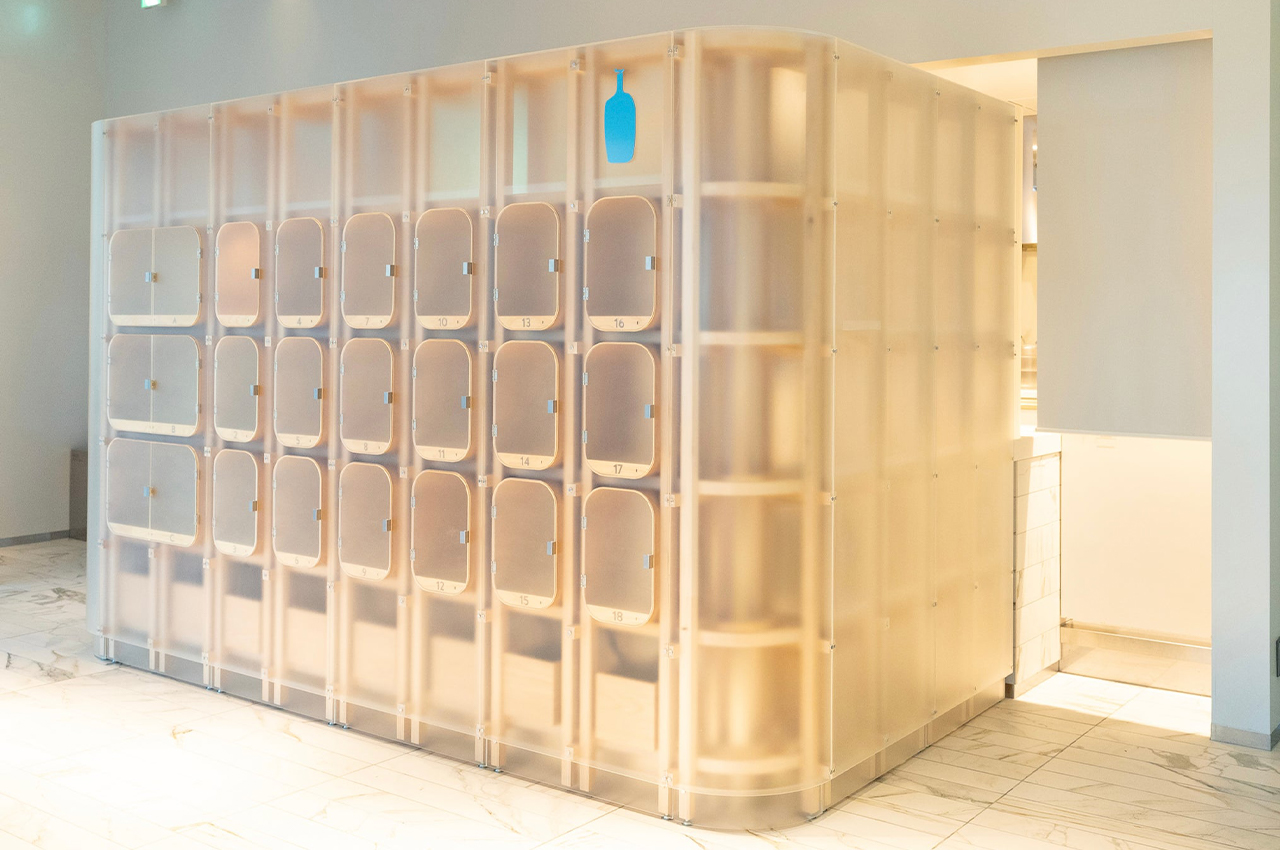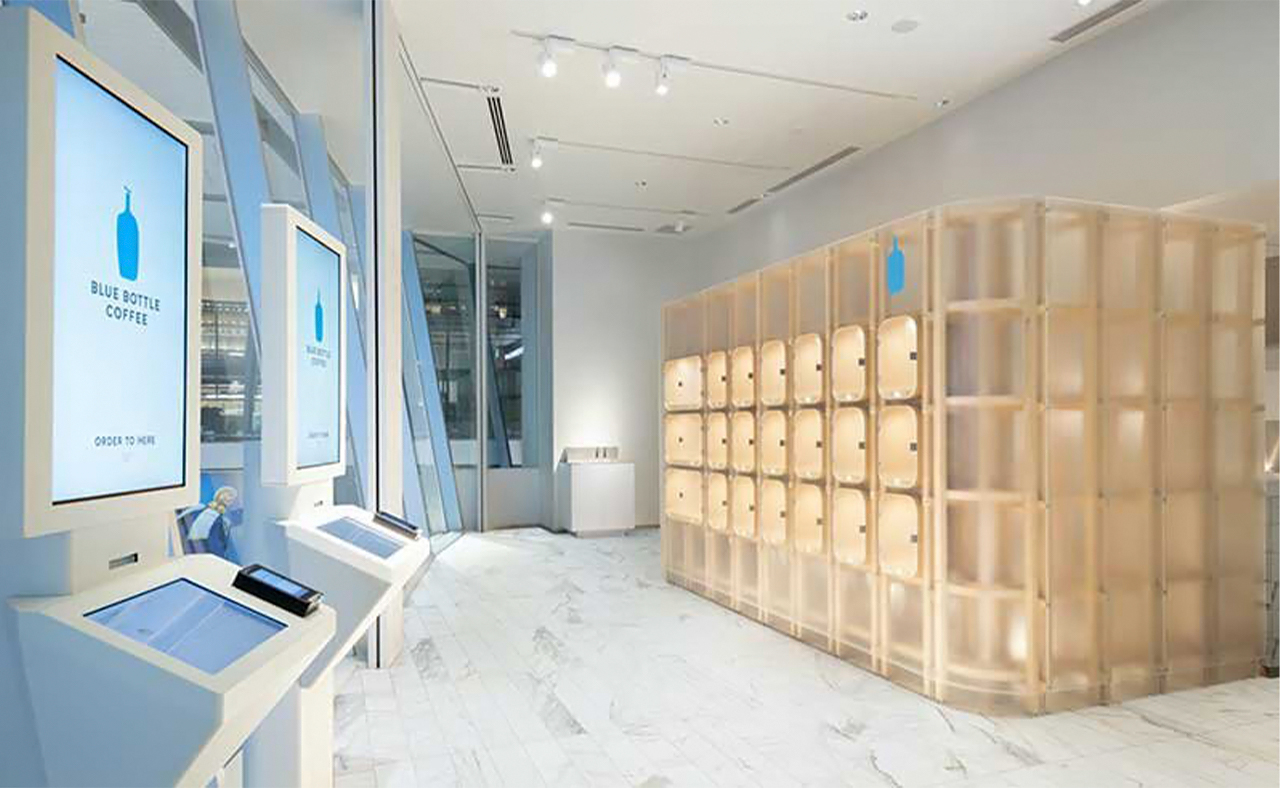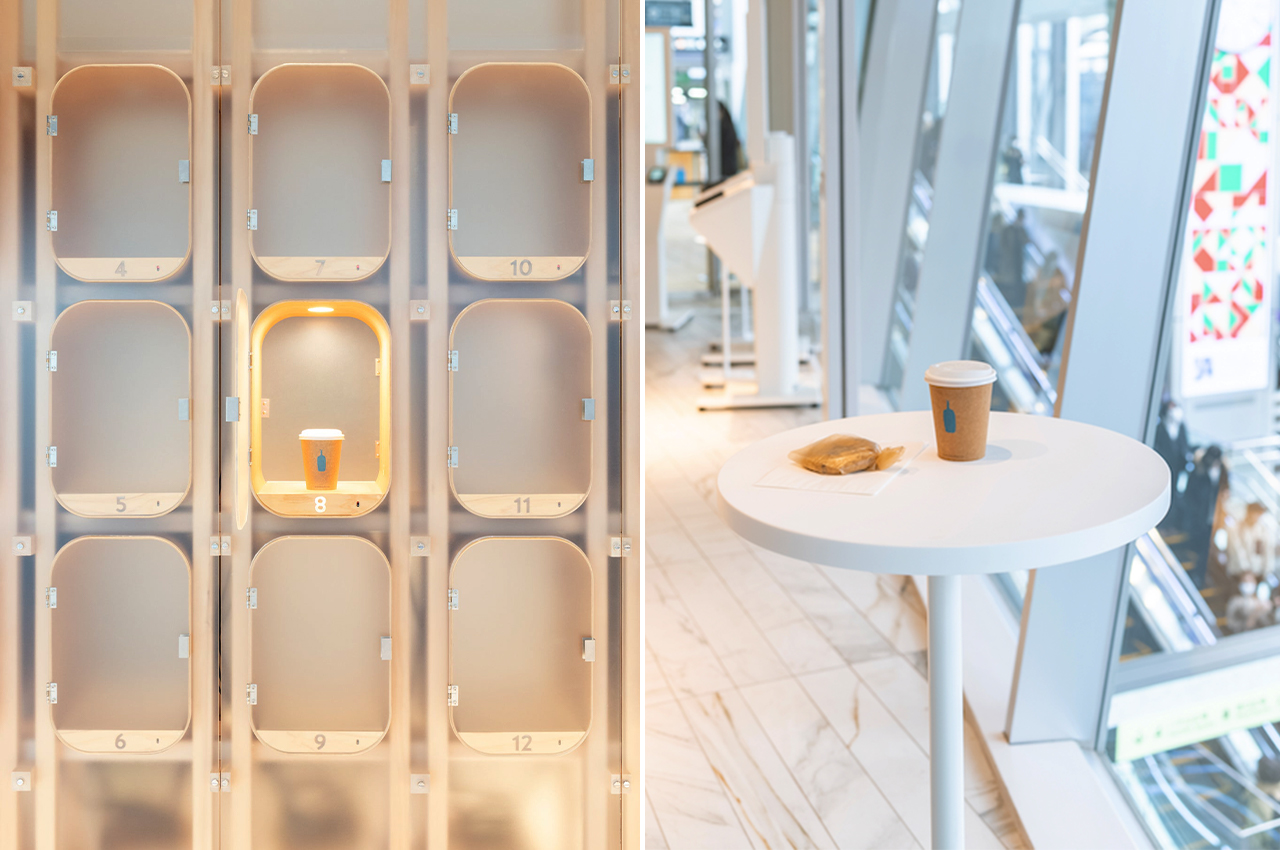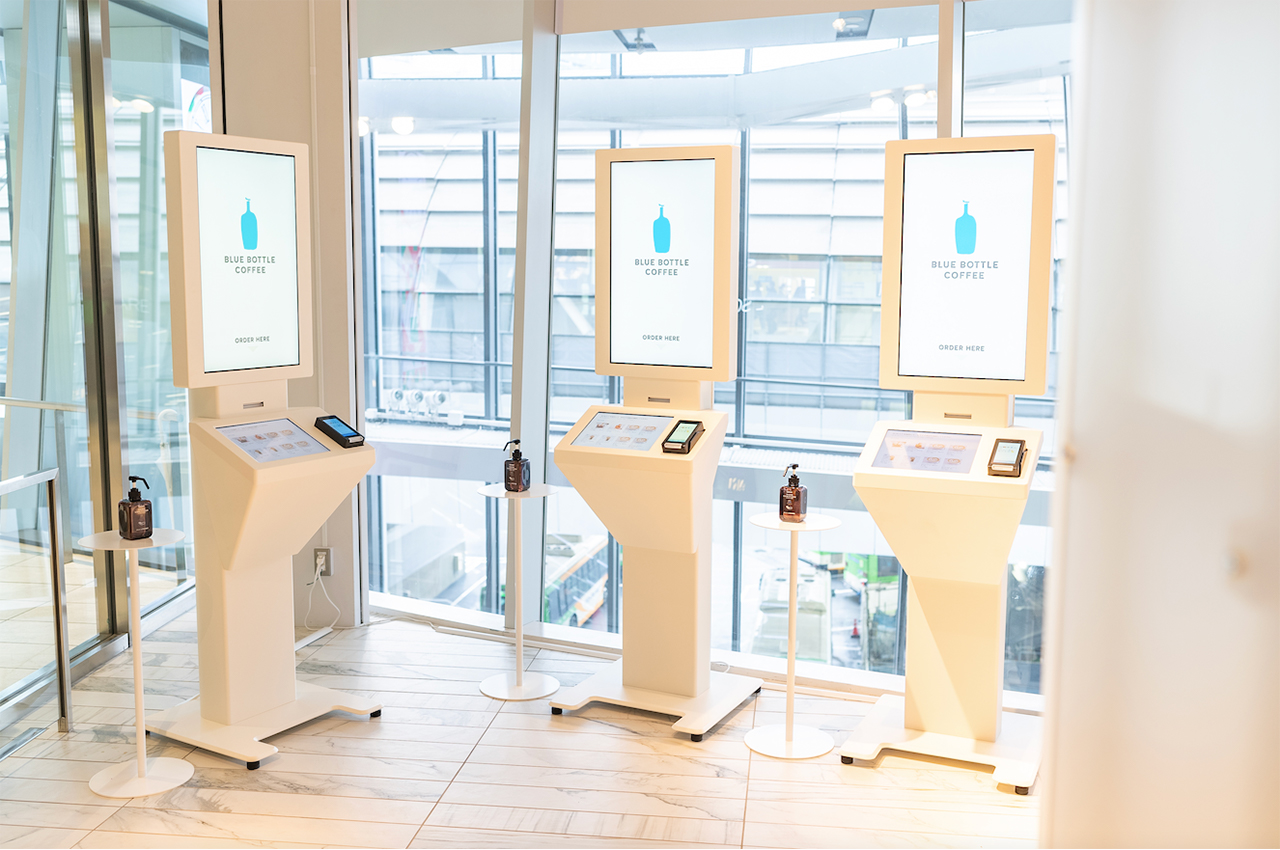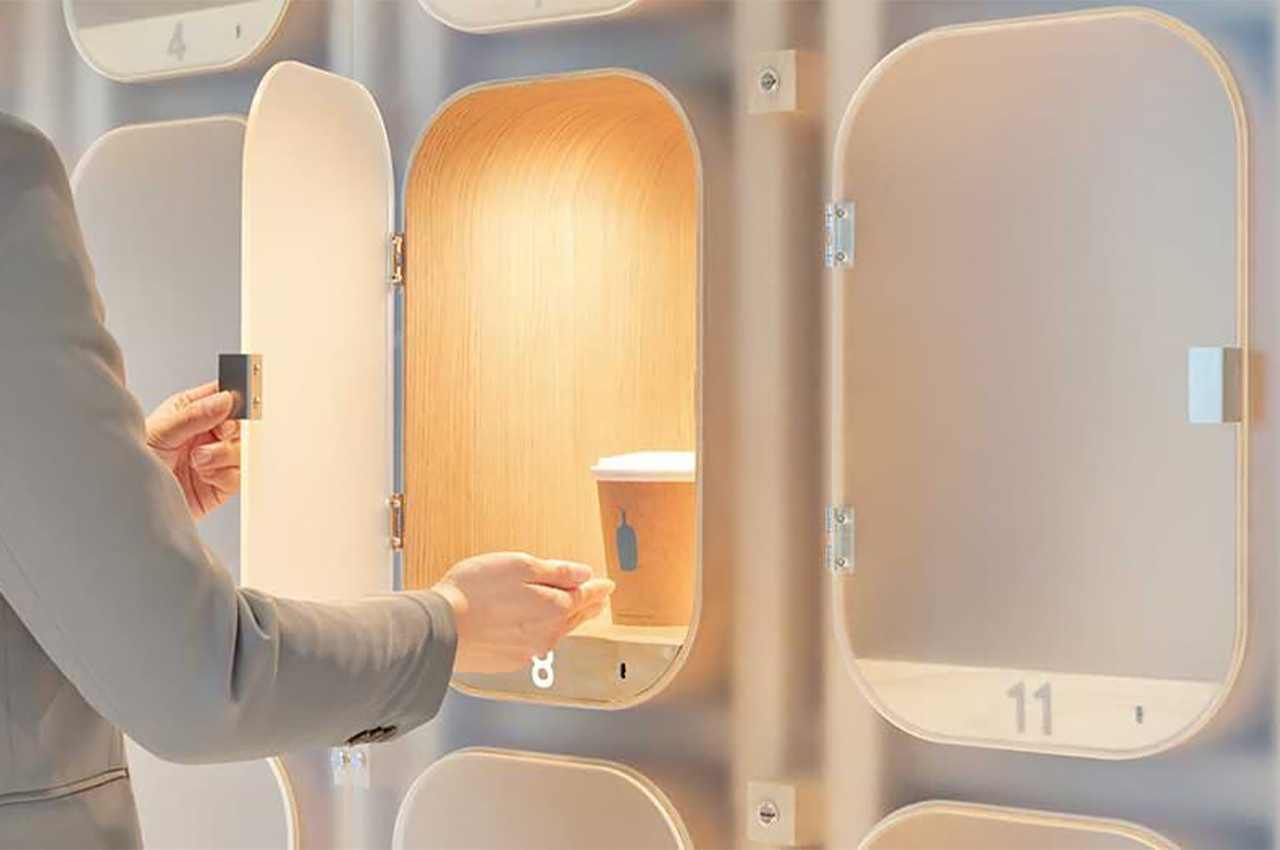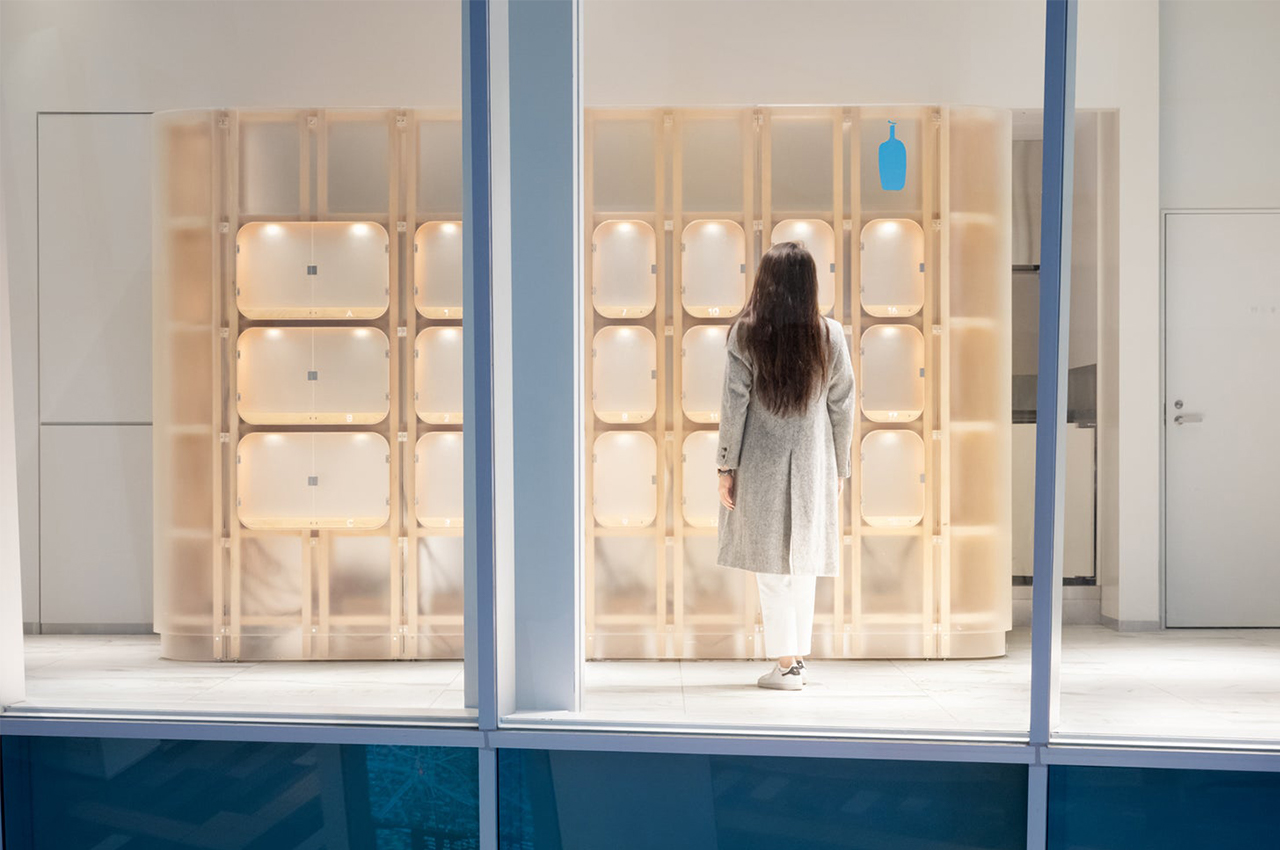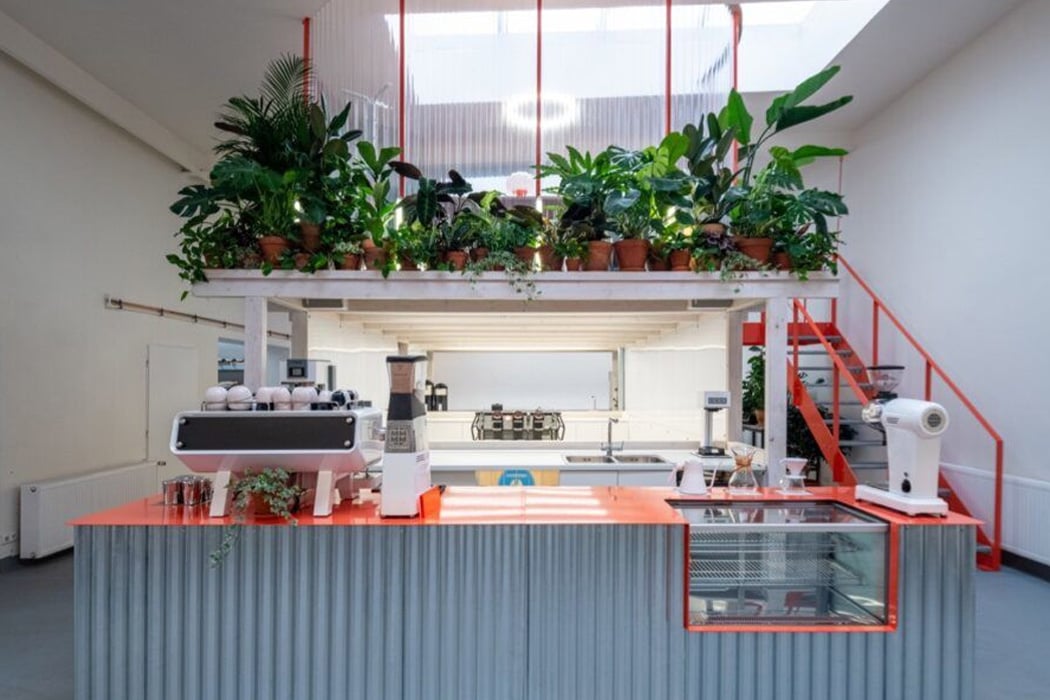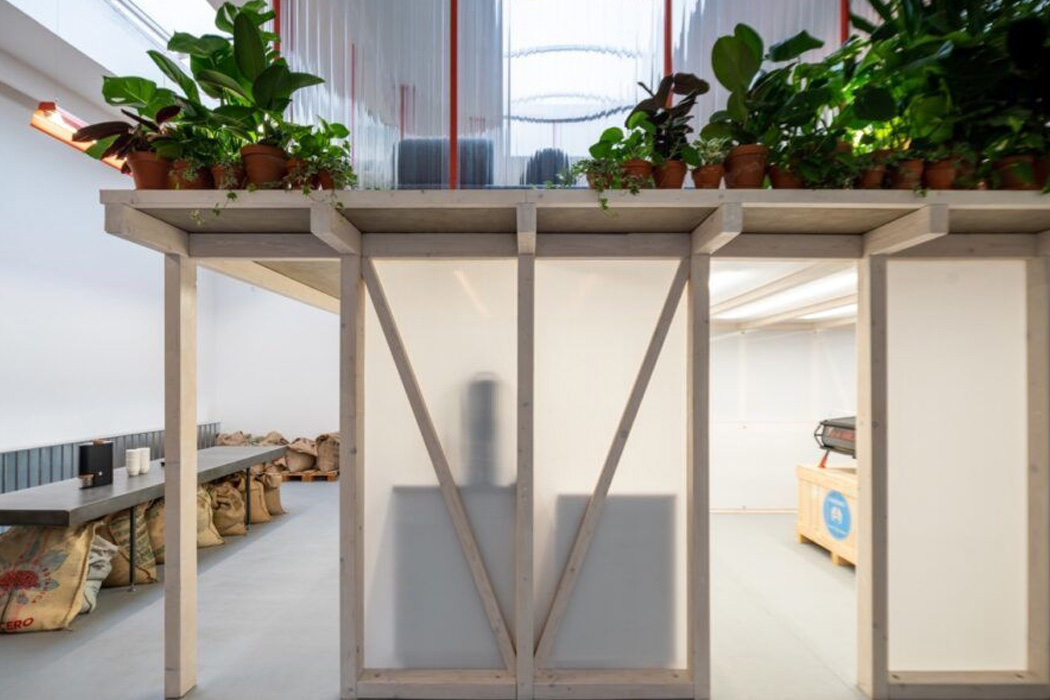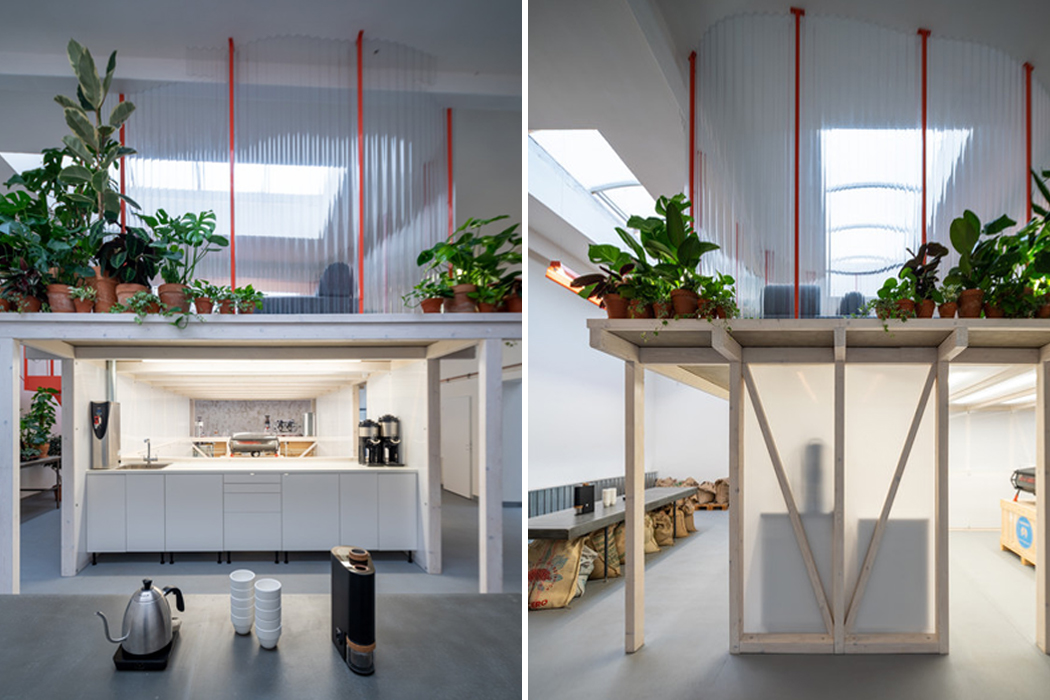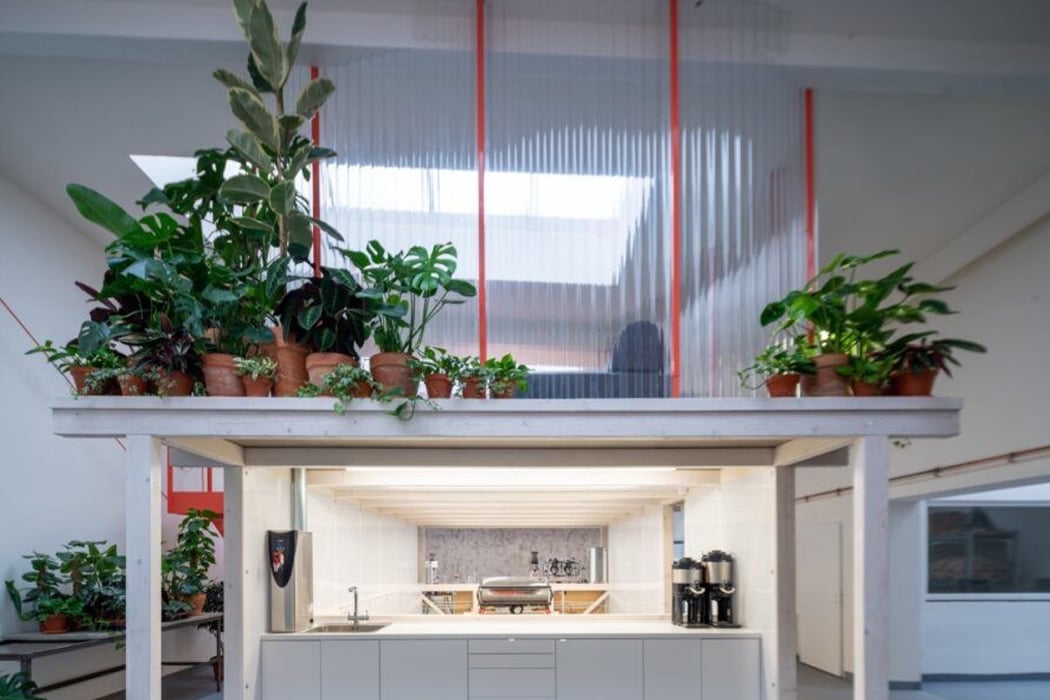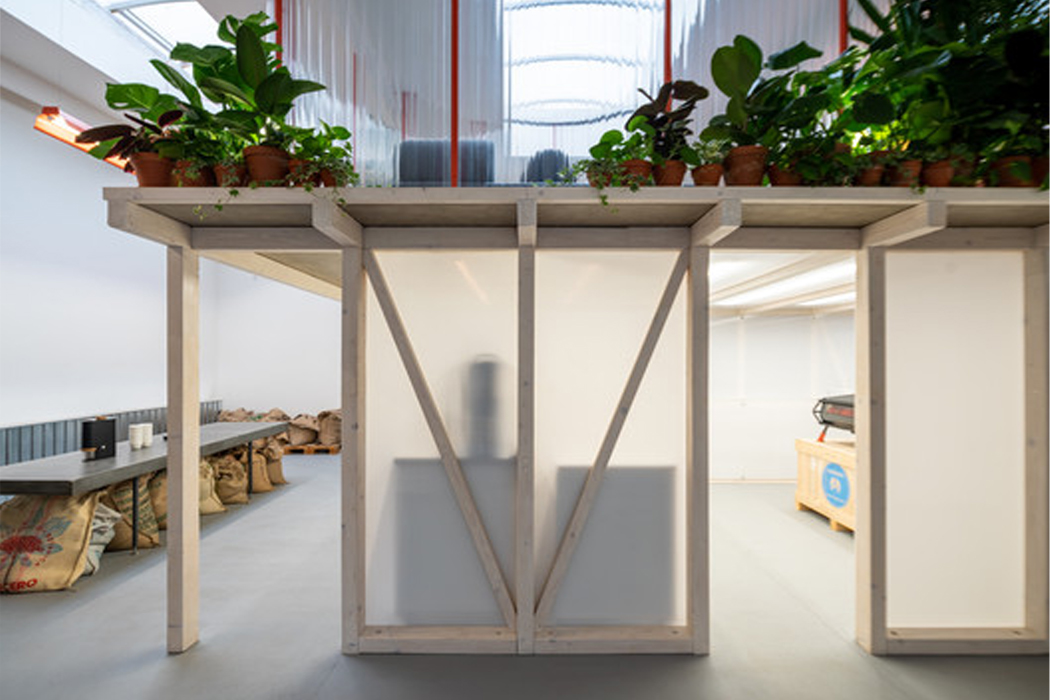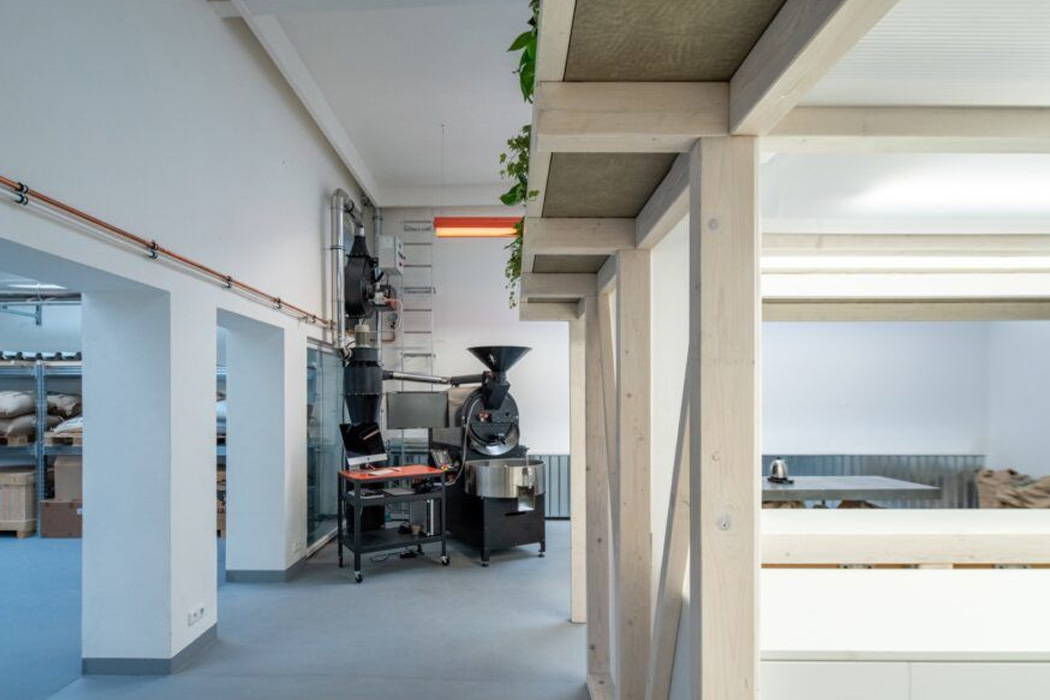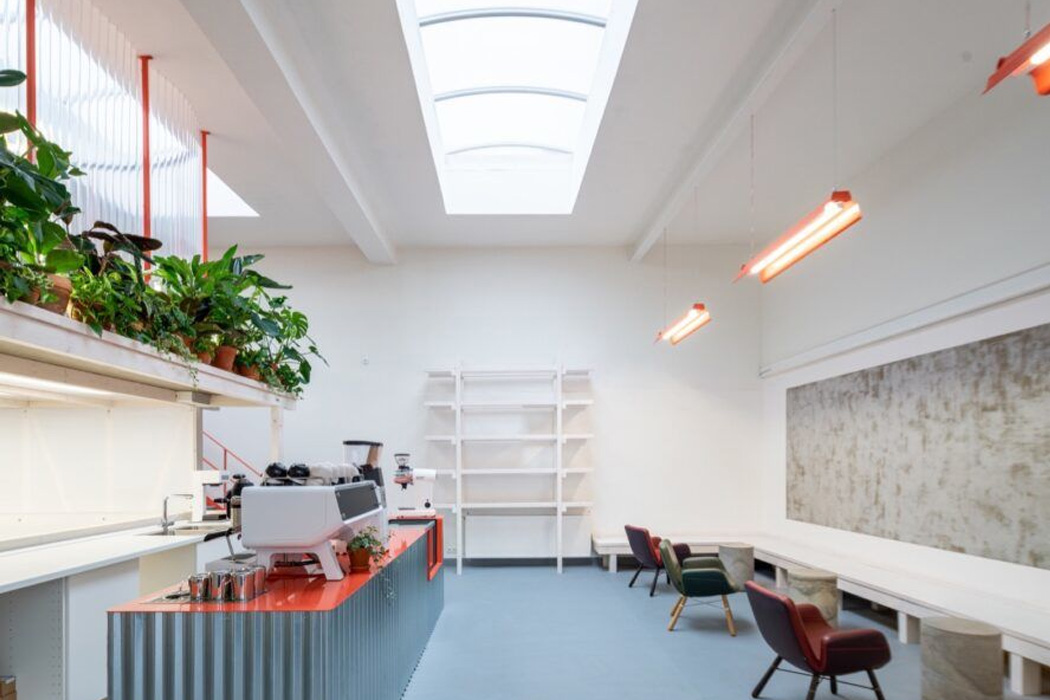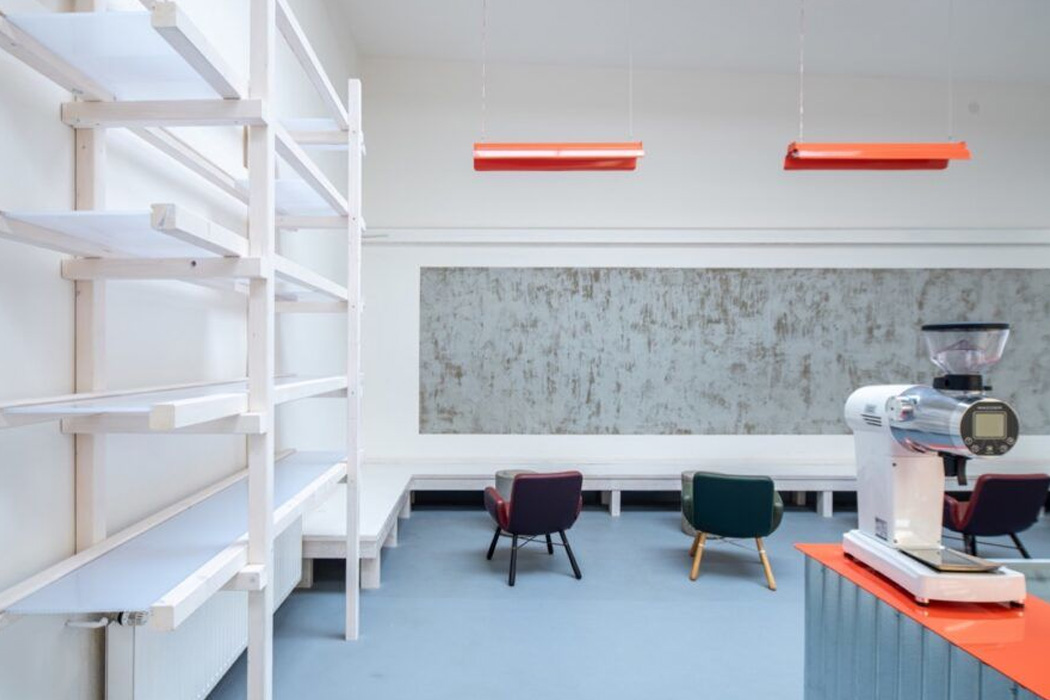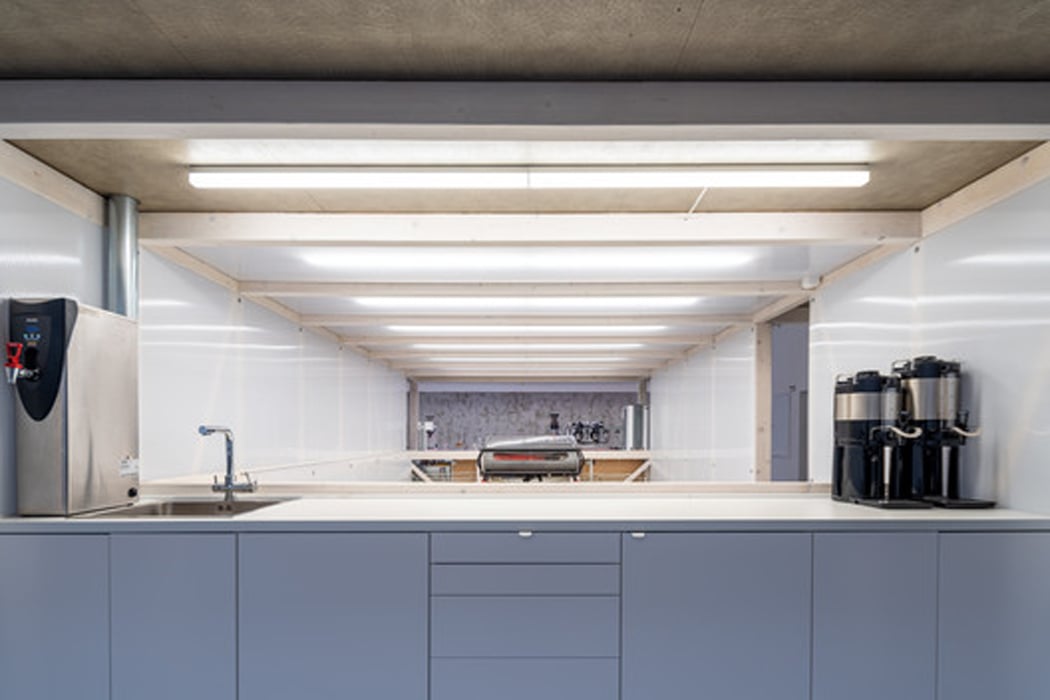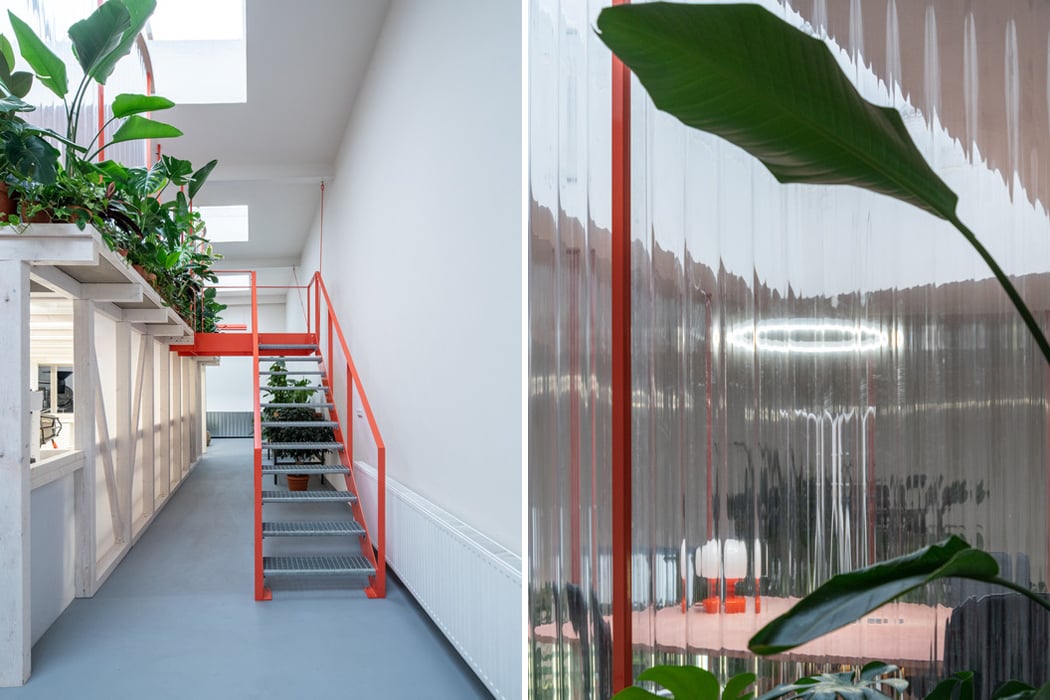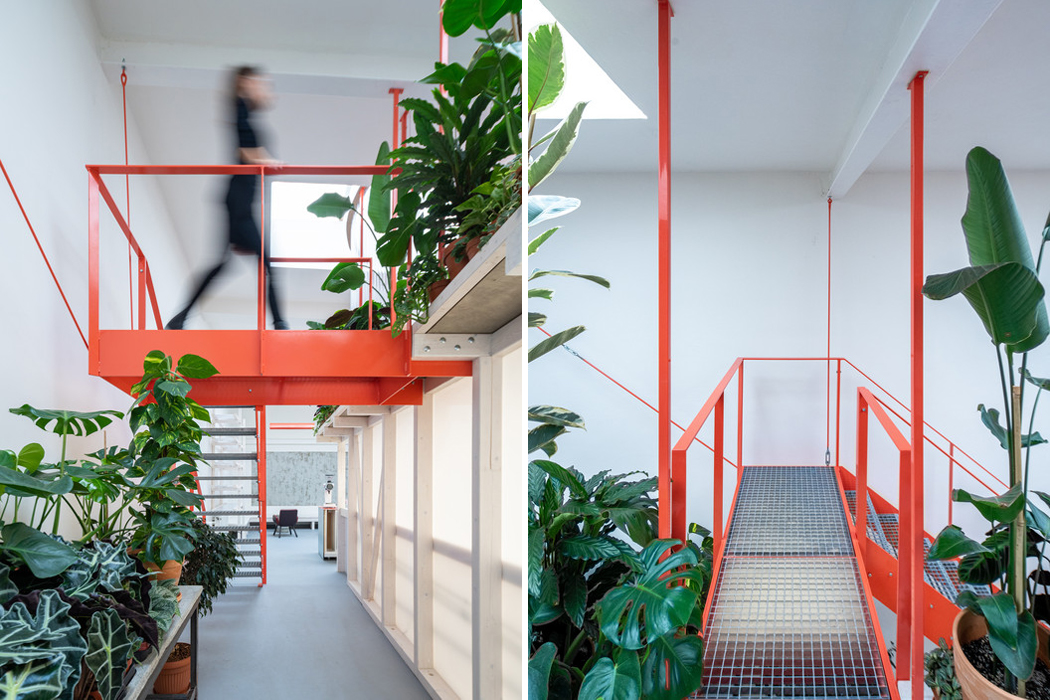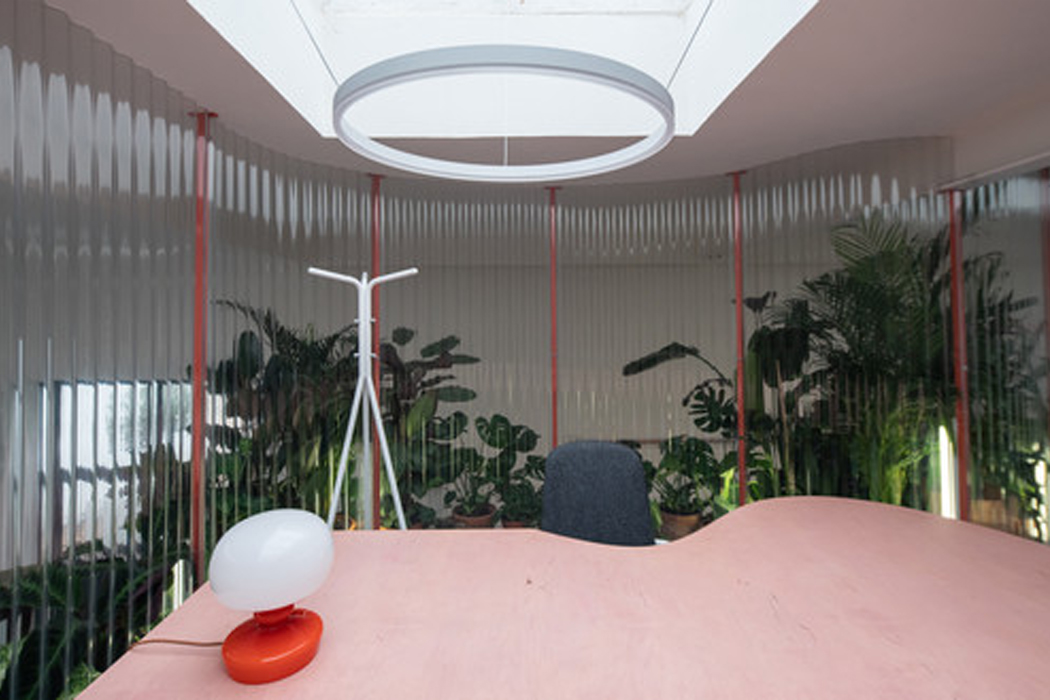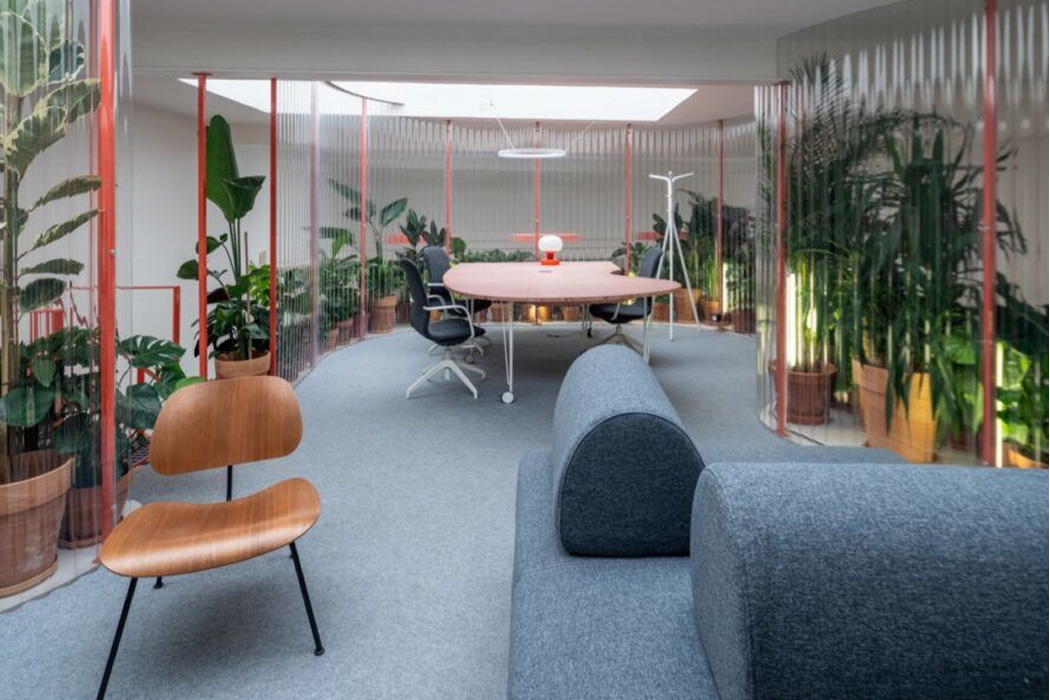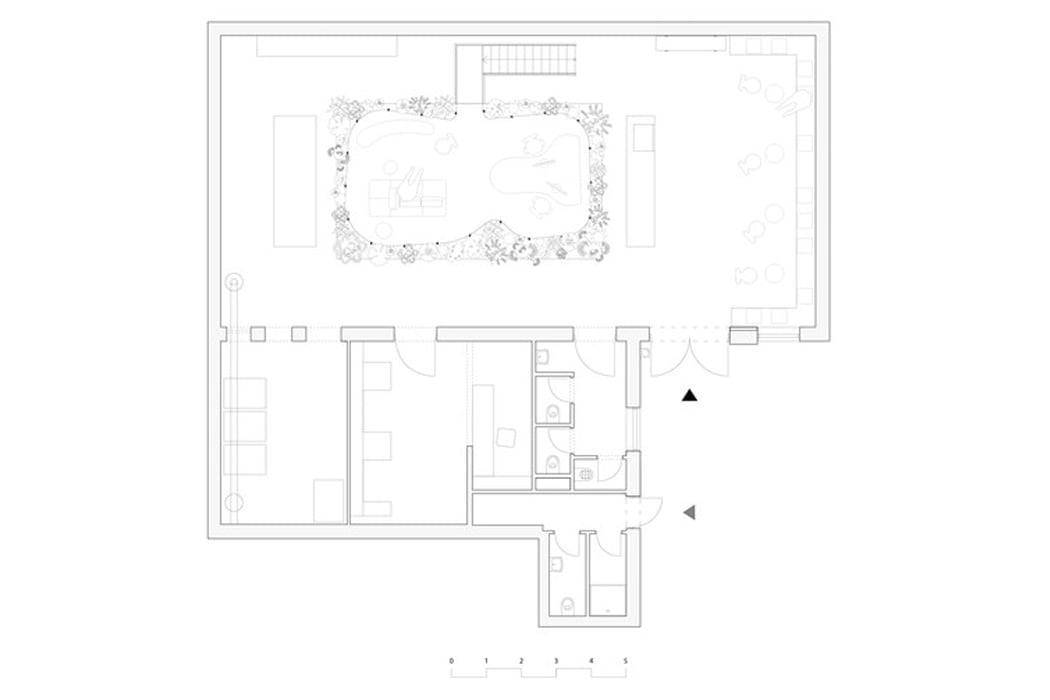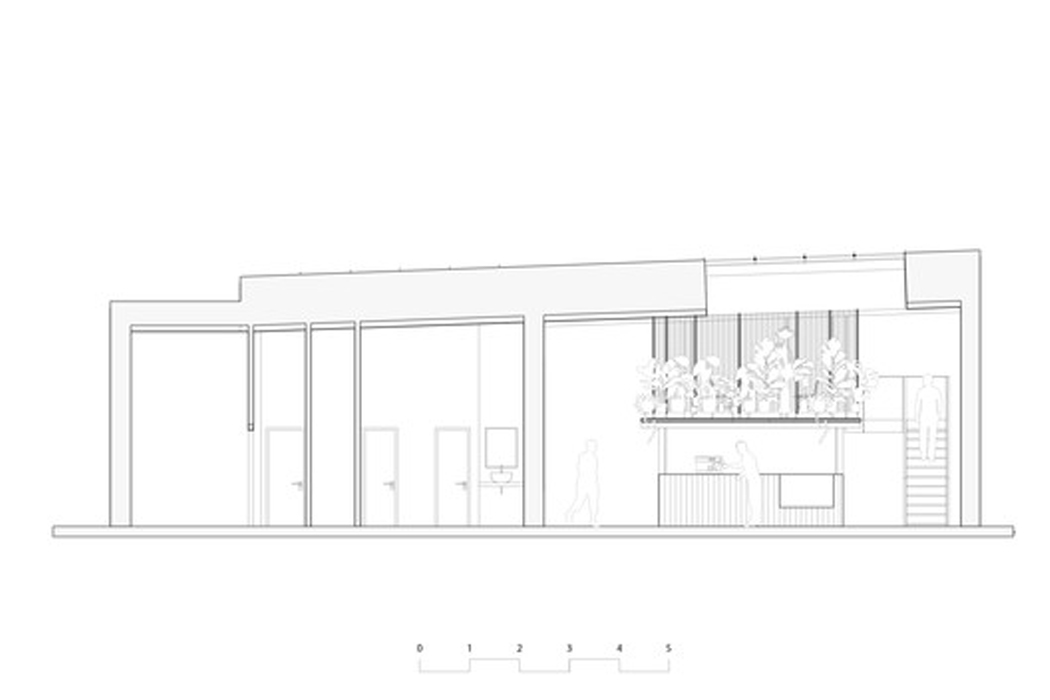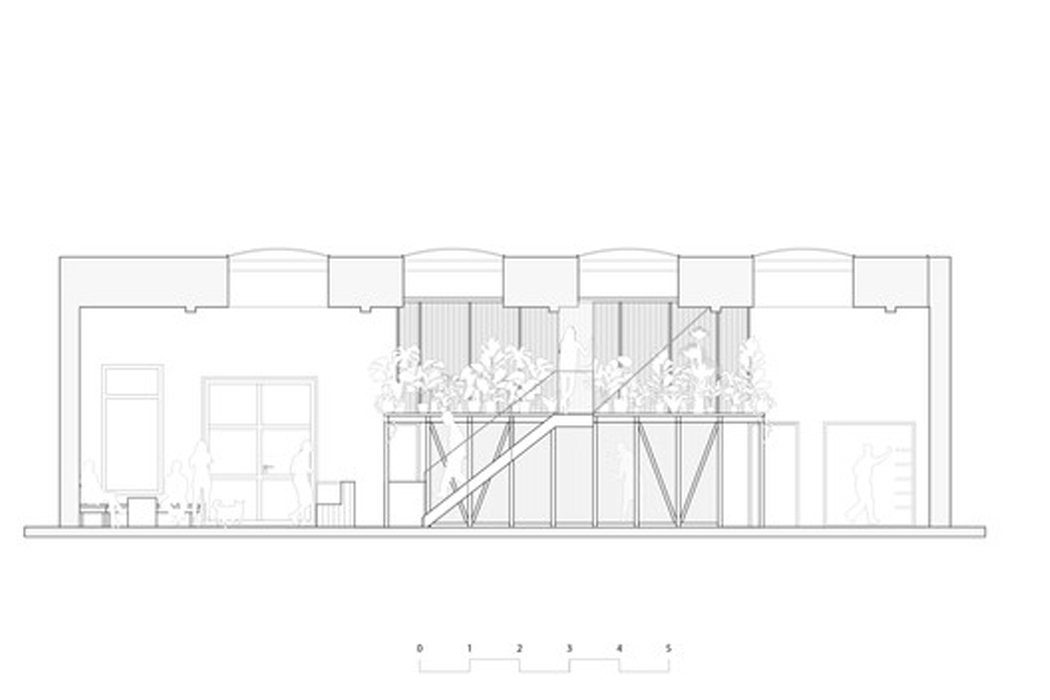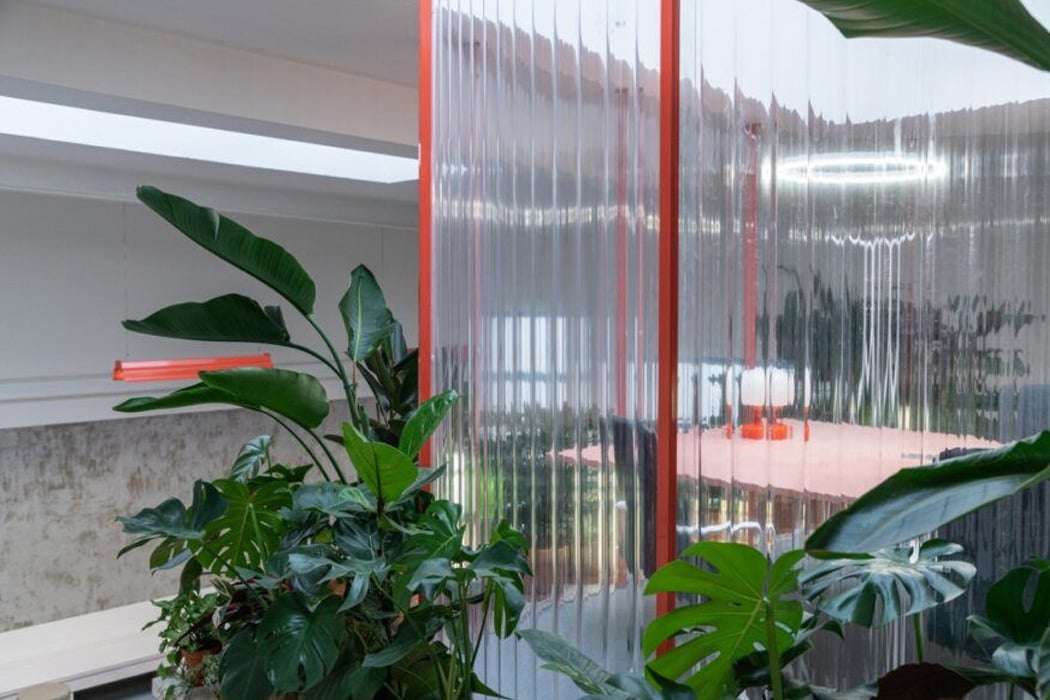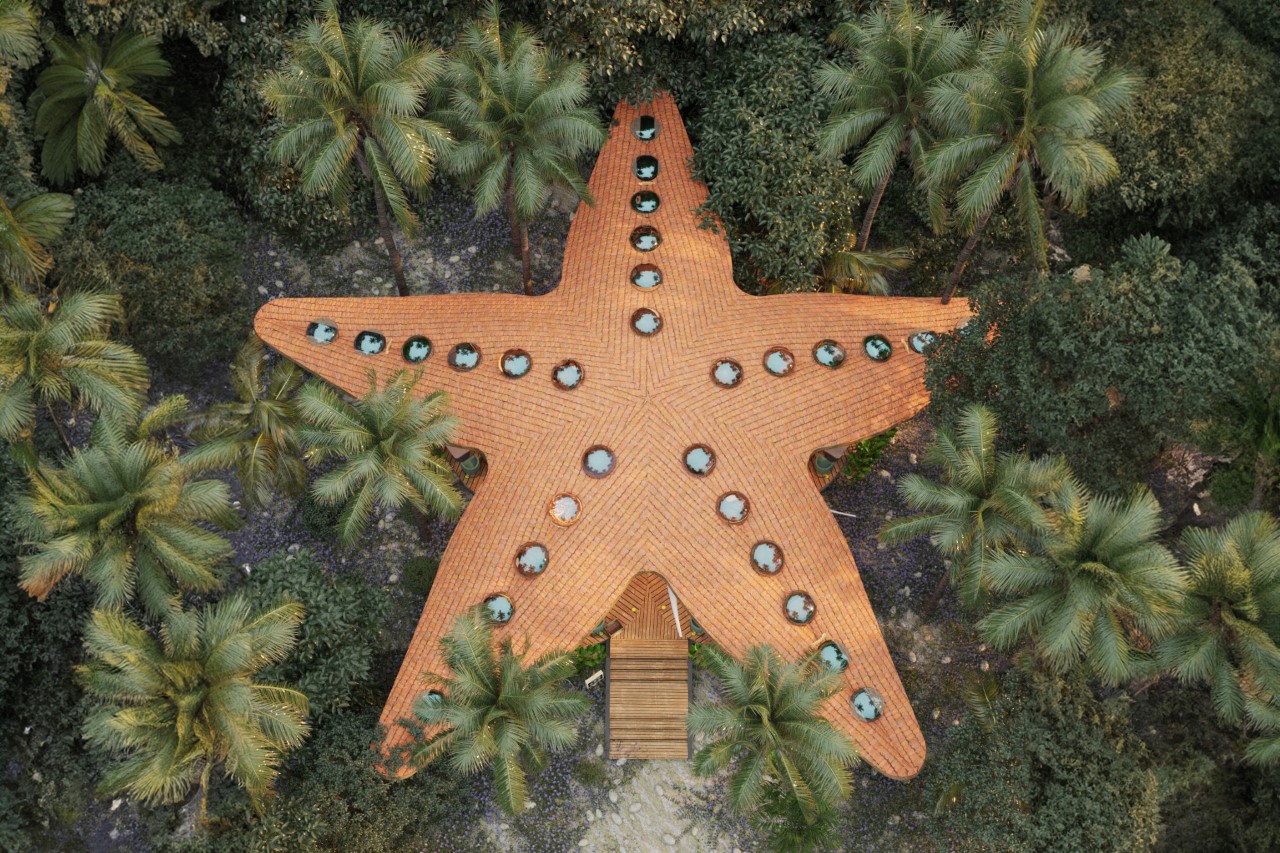
Have you seen buildings that sometimes resemble plants, flowers, or animals? Wonder what that’s called? Biomimetic Architecture is a fascinating concept that takes inspiration from nature to design buildings. It’s about bringing the efficiency, resilience, and beauty of nature into our built environment. The Starfish Coffeeshop & Bar, a stunning architectural marvel, epitomizes this ethos with its seamless integration of organic forms and sustainable materials.
Designer: Thilina Liyanage
At first glance, the structure resembles a starry creature from beneath the waves. This organic aesthetic is no accident; it’s a deliberate tribute to the starfish, with its graceful arms extending outward. This innovative design approach not only captivates the eye but also serves a functional purpose, creating a space that feels naturally harmonious and inviting.
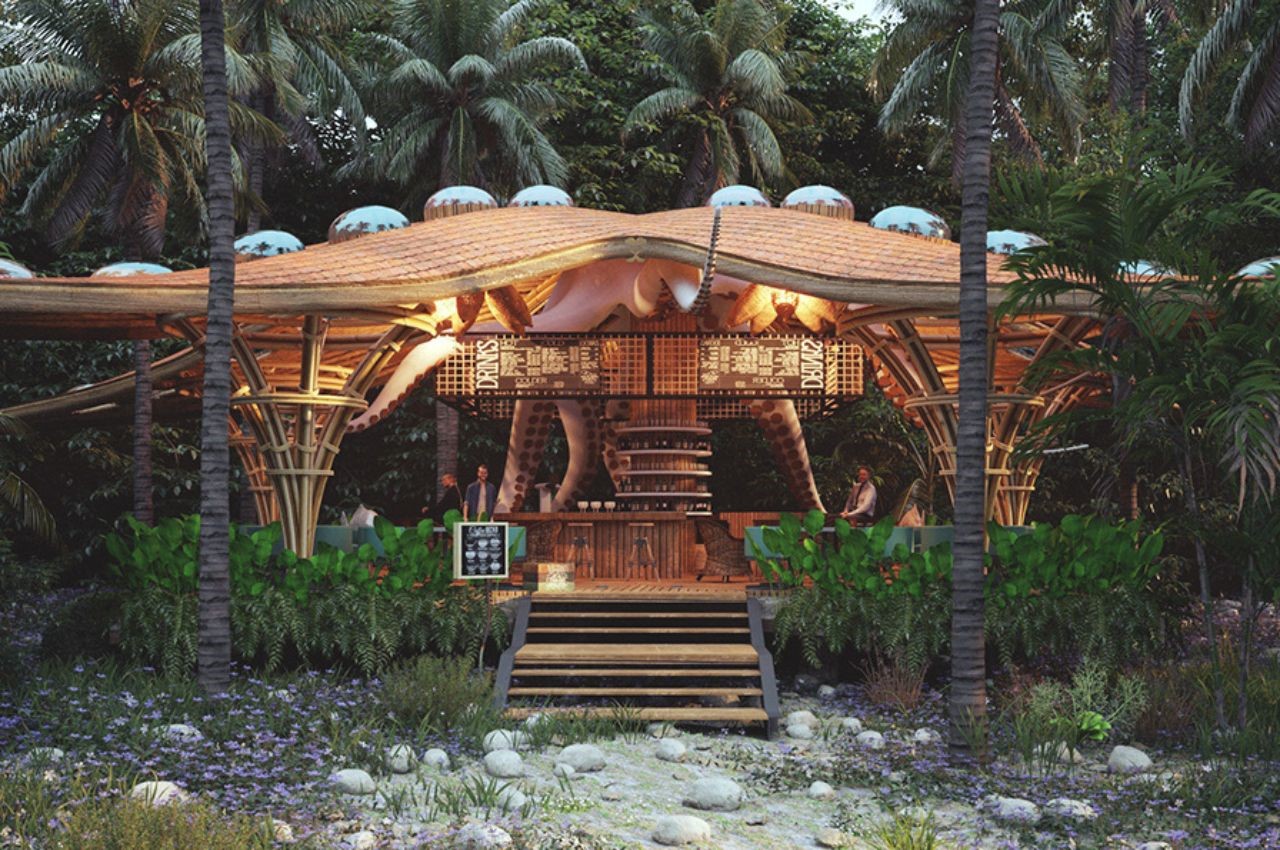
The central disk, reminiscent of a starfish’s body, serves as the nucleus of the coffee shop & bar. Supported by five columns beneath each arm, the structure exudes stability and balance. Here, customers can gather around a 360-degree bar, enjoying cocktails amidst a tropical ambiance. The surrounding seating areas, arranged in a radial fashion, invite visitors to linger and savor the experience, similar to relaxing in a beachside shack with open views on all sides.
One of the most striking features of this coffee shop & bar is its emphasis on natural light and ventilation. Glass panels, resembling the ampullae of a starfish, beautify the ceiling, allowing sunlight to filter through during the day. This not only illuminates the space but also reduces the need for artificial lighting, enhancing energy efficiency.
Moreover, the use of speculative locally sourced materials such as bamboo and wood underscores the project’s commitment to vernacular architecture. By leveraging indigenous resources, the structure seamlessly blends with its surroundings while minimizing its environmental footprint. This emphasis on sustainability extends beyond mere aesthetics, embodying a holistic approach to responsible design.
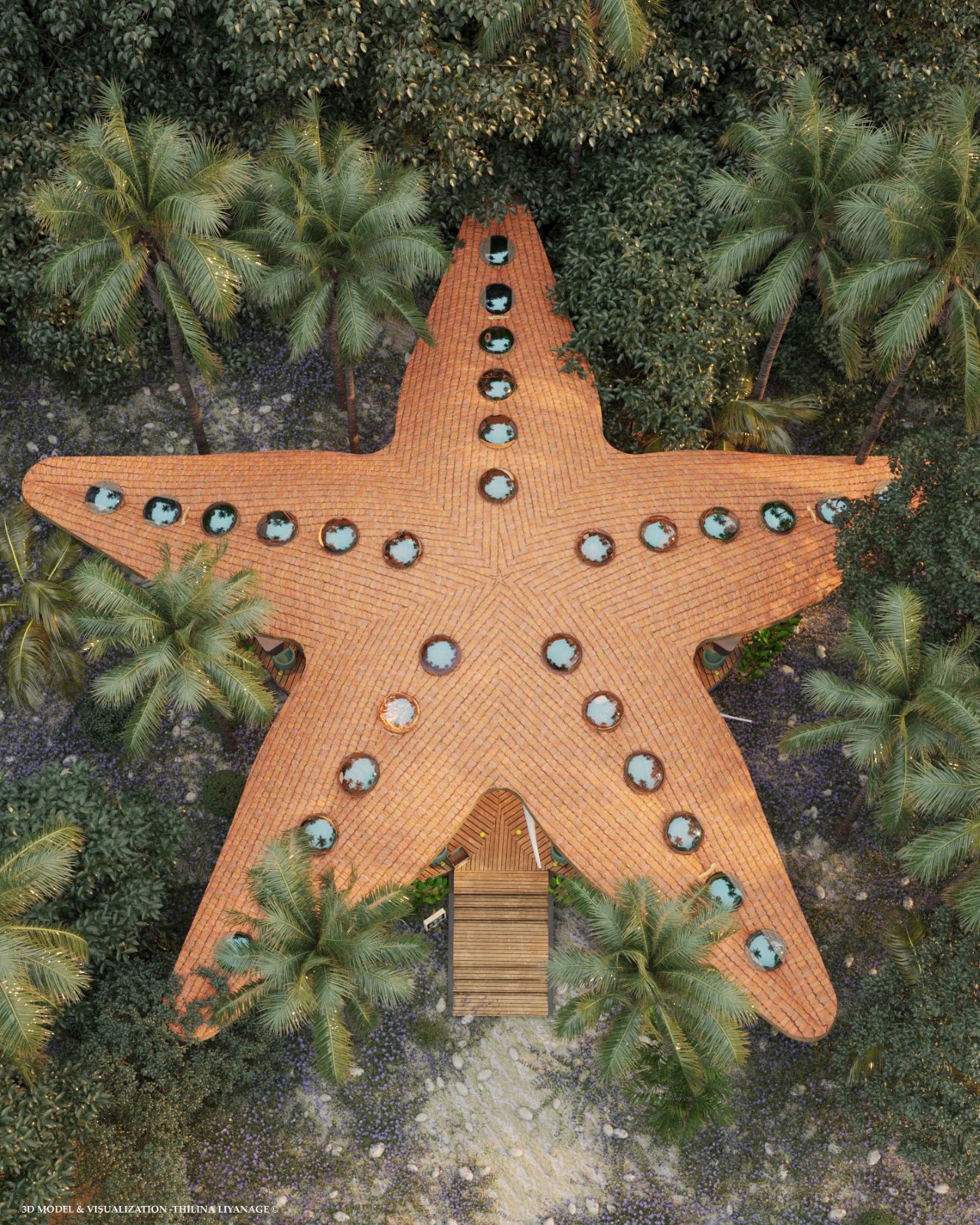
Perhaps the crowning touch of the Starfish coffee shop & bar is the lifelike sculpture suspended above the bar. Resembling a starfish or octopus, this installation adds a whimsical touch to the space, infusing it with a sense of wonder and playfulness. For customers seated beneath, it creates a sense of being immersed in an underwater world, further enhancing the overall experience.
With its open-air design and ample seating, the coffee shop & bar provides the perfect setting for leisurely conversations and shared moments. Families can gather around the central bar, enjoying refreshing beverages while soaking in the tropical atmosphere. Children can delight in the whimsical surroundings, imagining themselves exploring an underwater kingdom teeming with life.
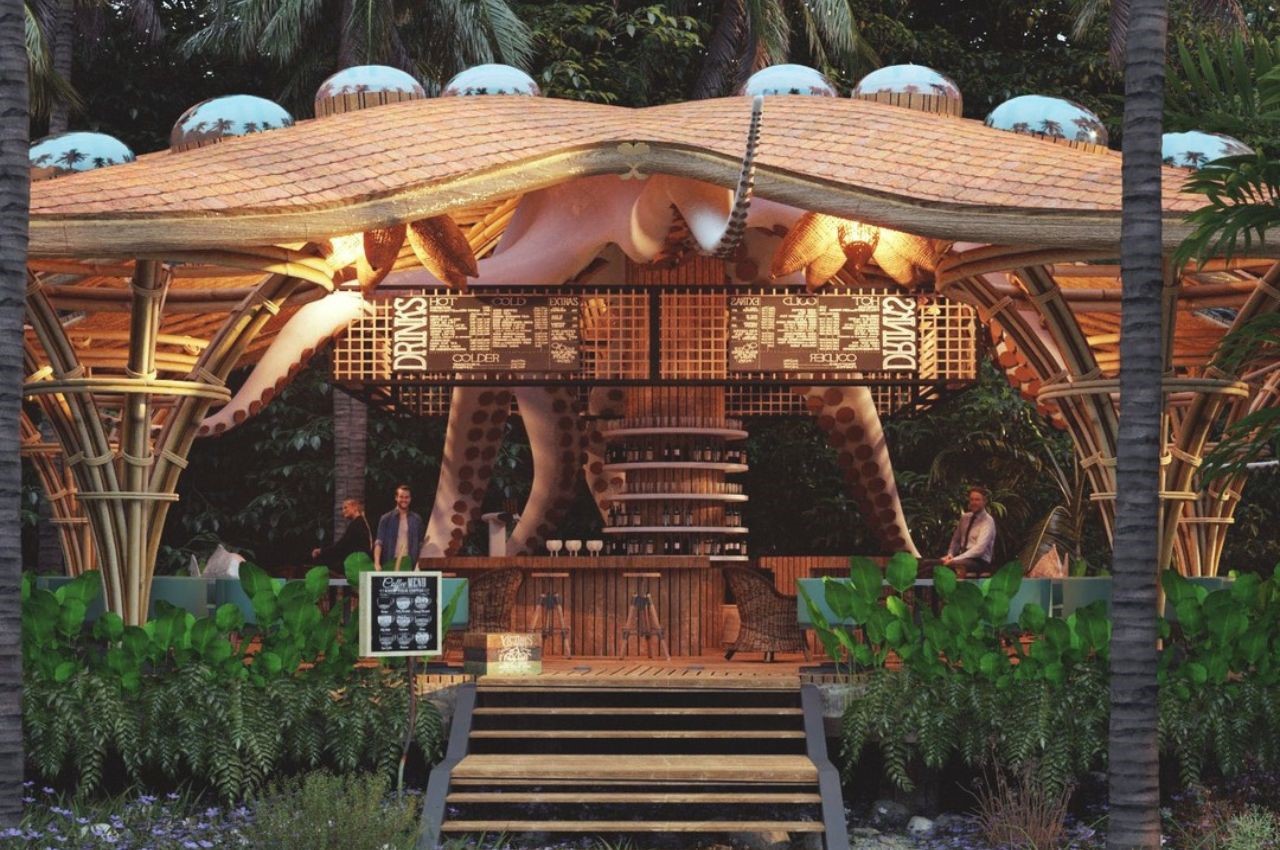
For those seeking respite from the heat, the coffee shop & bar offers a cool oasis, where icy beverages and frosty beers provide welcome relief. Whether you’re sipping on a craft cocktail or savoring a cold brew, every sip is accompanied by the gentle rustle of leaves and the soothing sounds of nature.
As the sun sets and the temperature cools, the ambiance shifts, casting a soft glow over the surroundings. Couples can enjoy a romantic evening under the stars, sharing sweet moments amidst the enchanting backdrop of the starfish-inspired architecture.
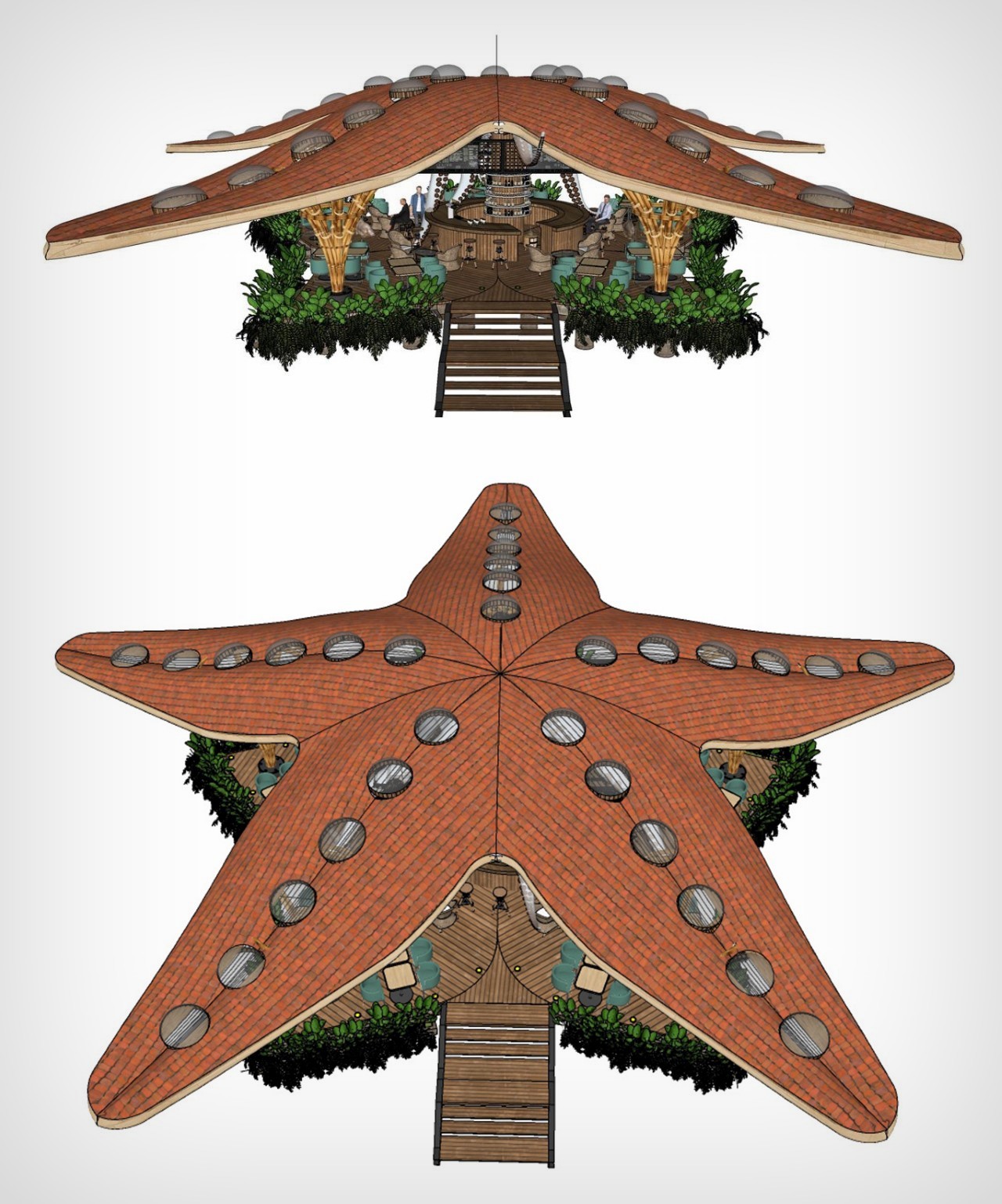
The post This Starfish Inspired Coffee Shop And Bar Brings Buildings To Life With Biomimetic Design first appeared on Yanko Design.
